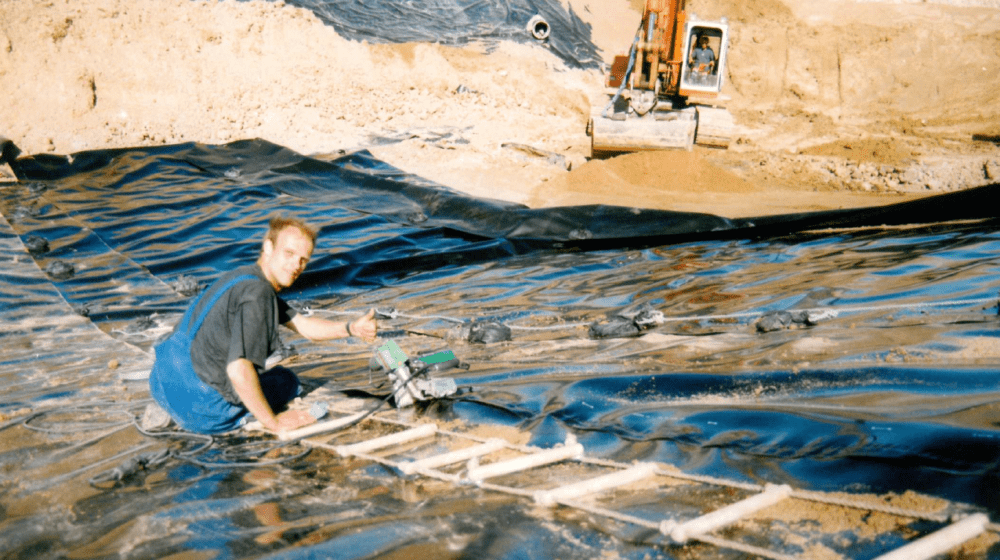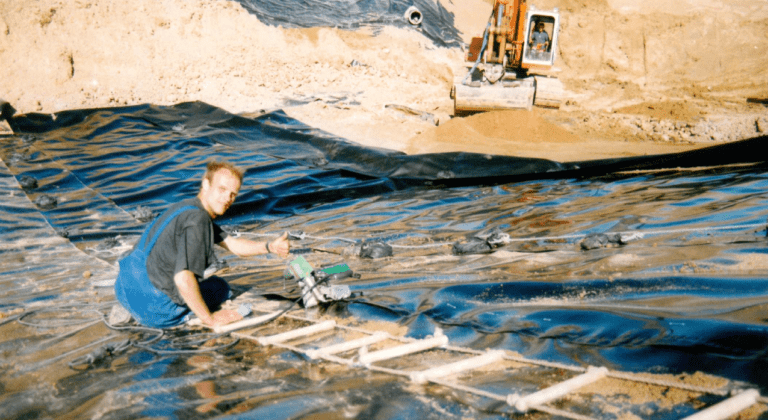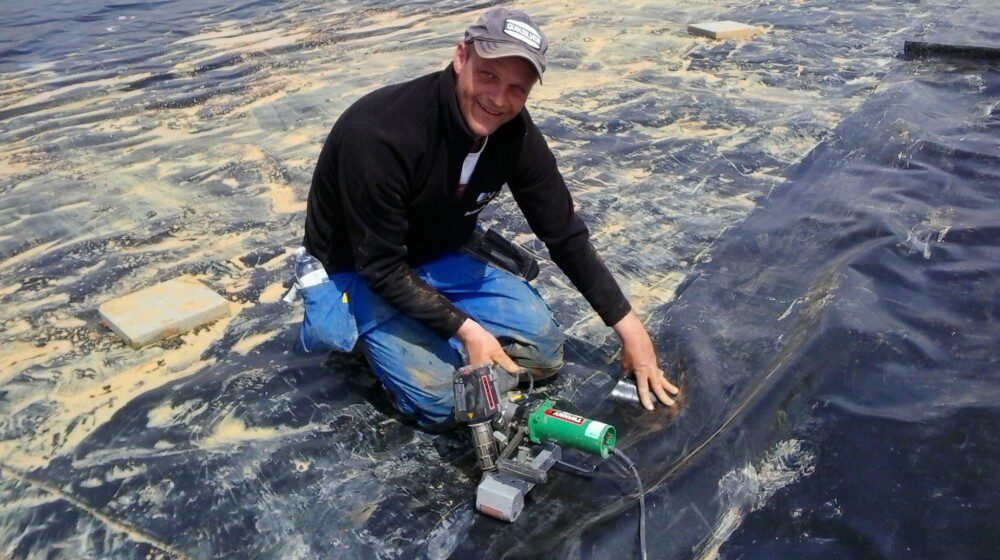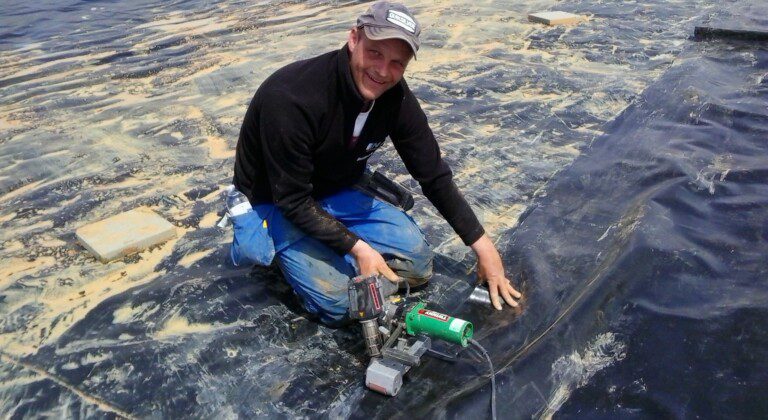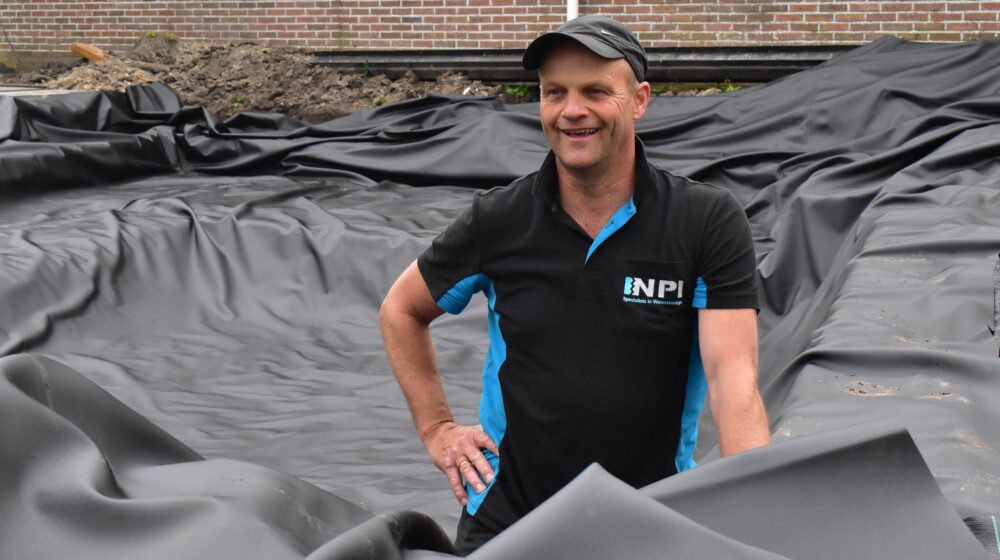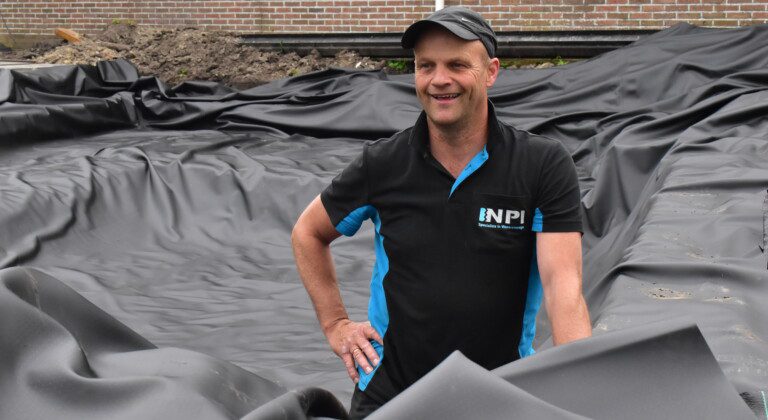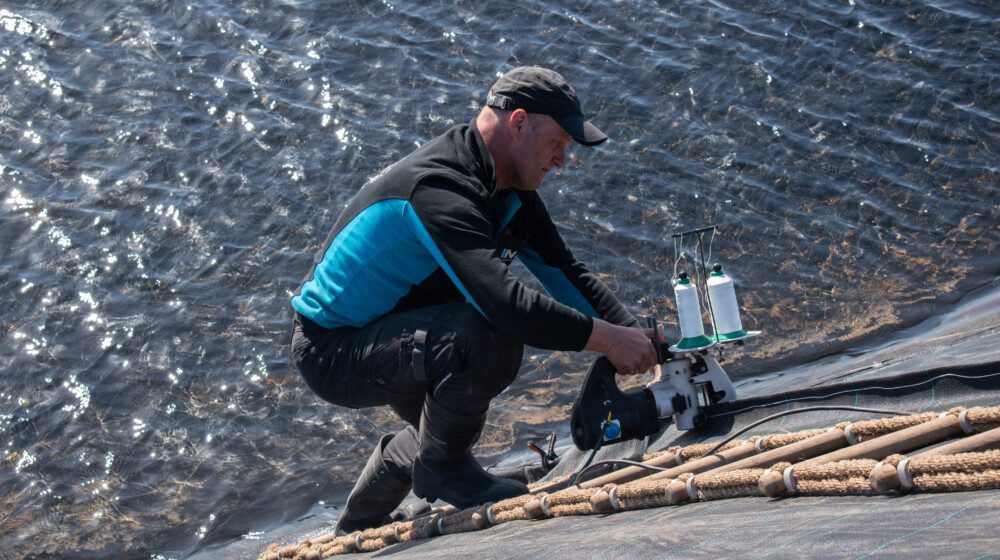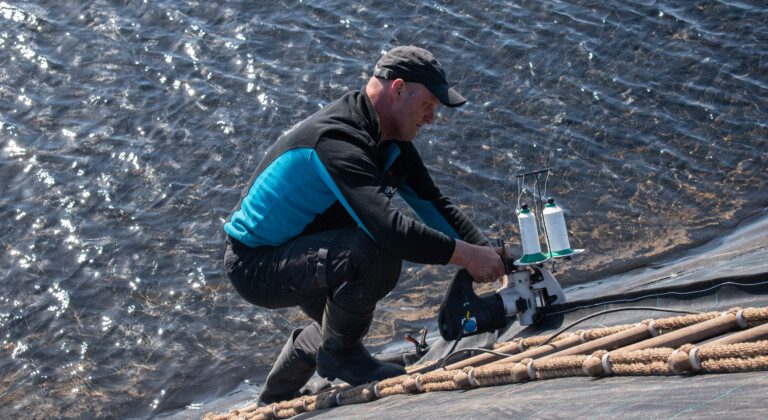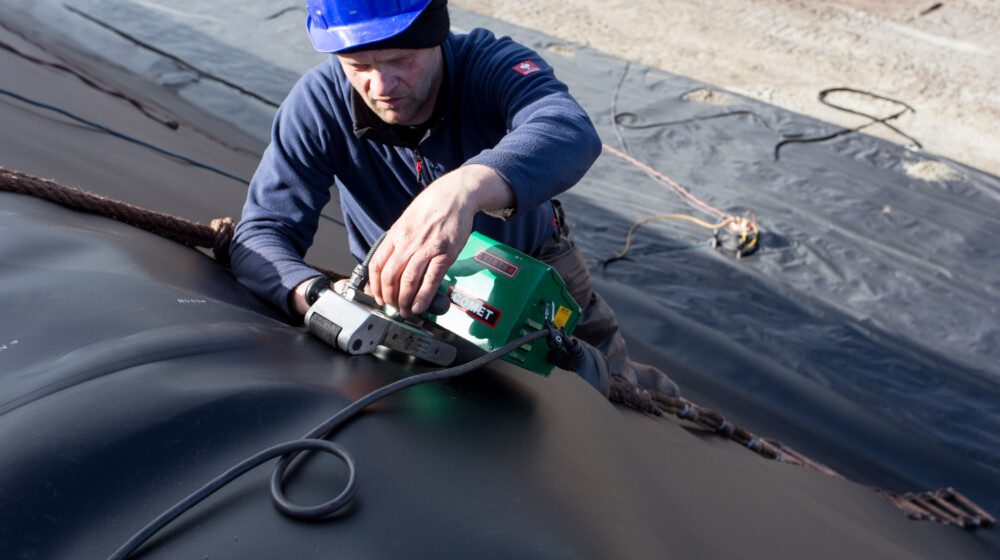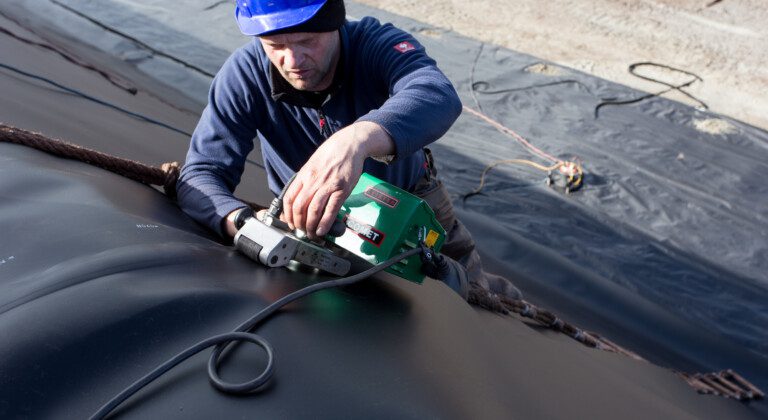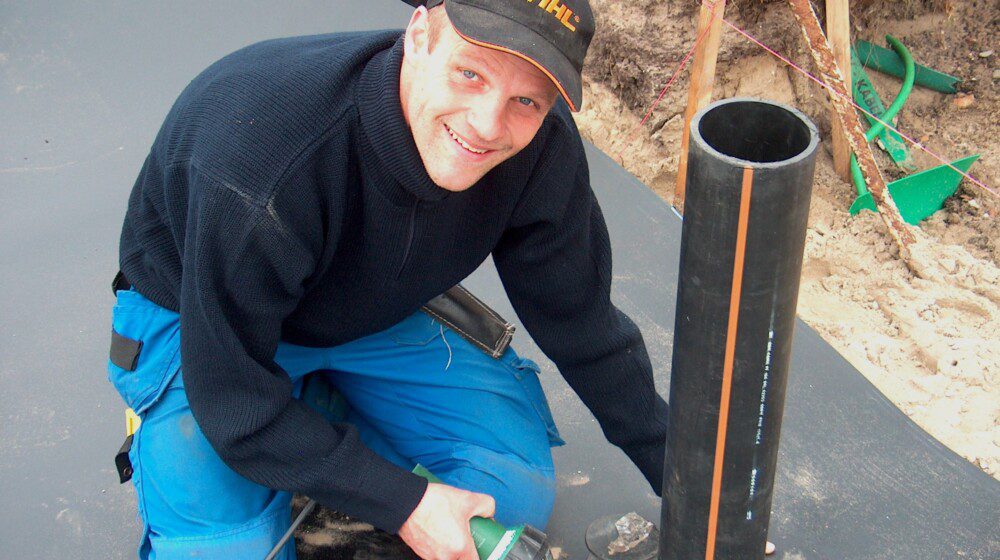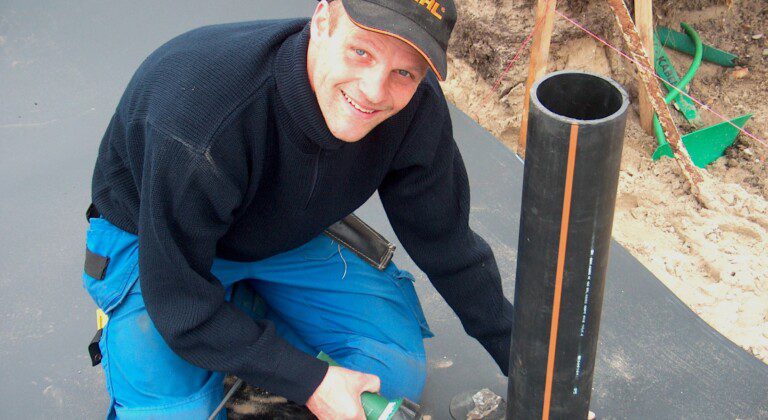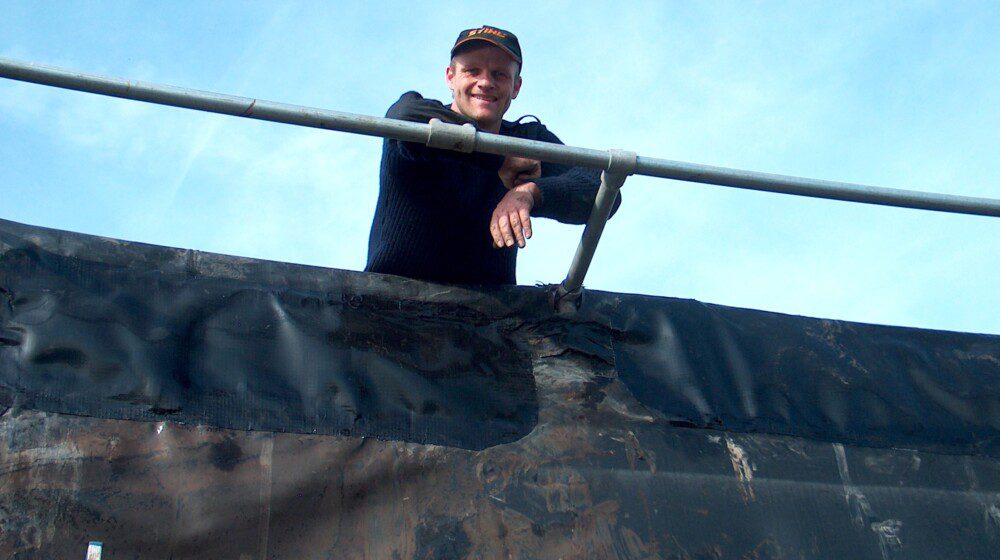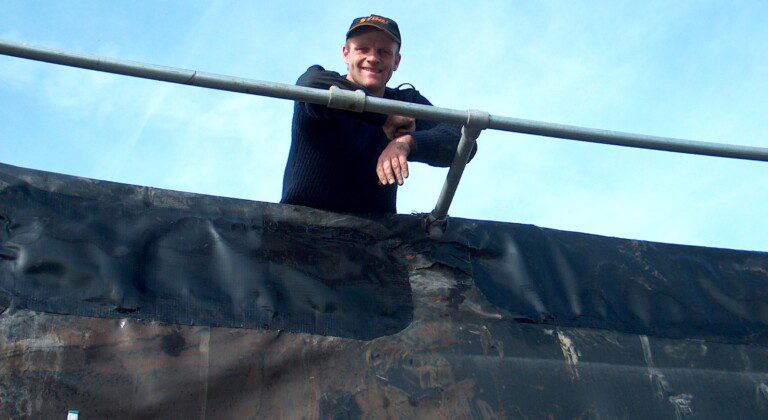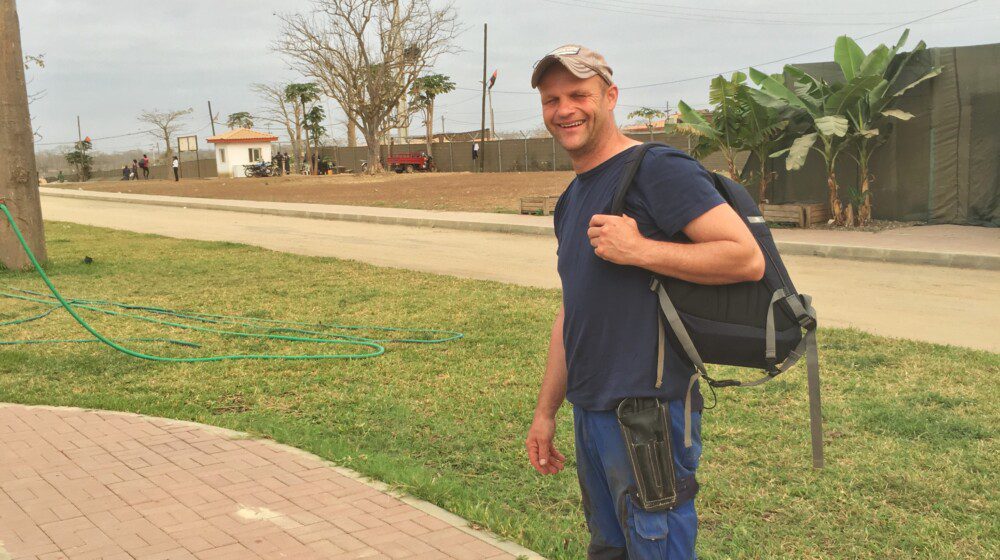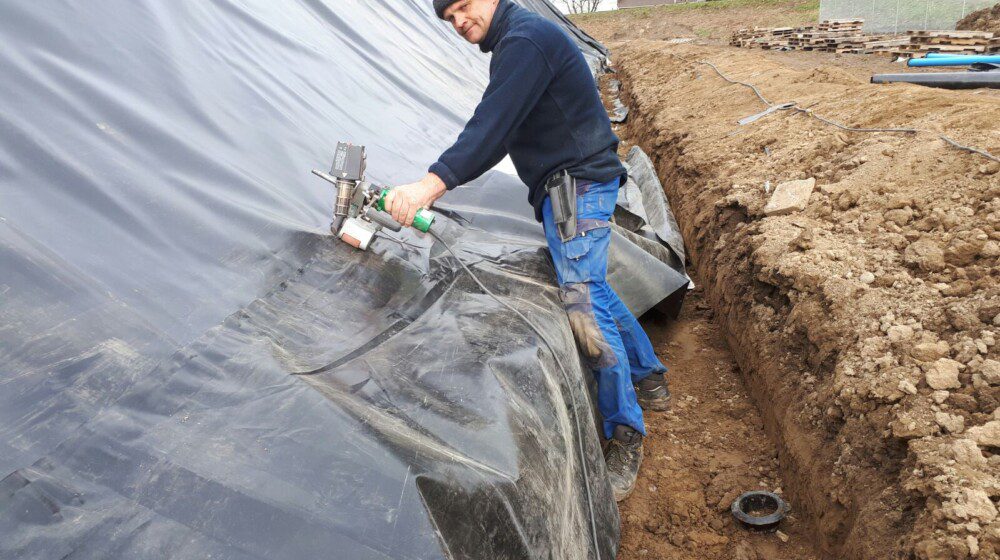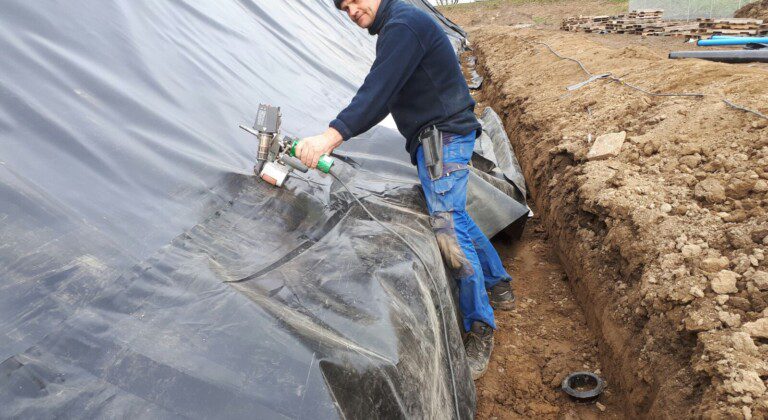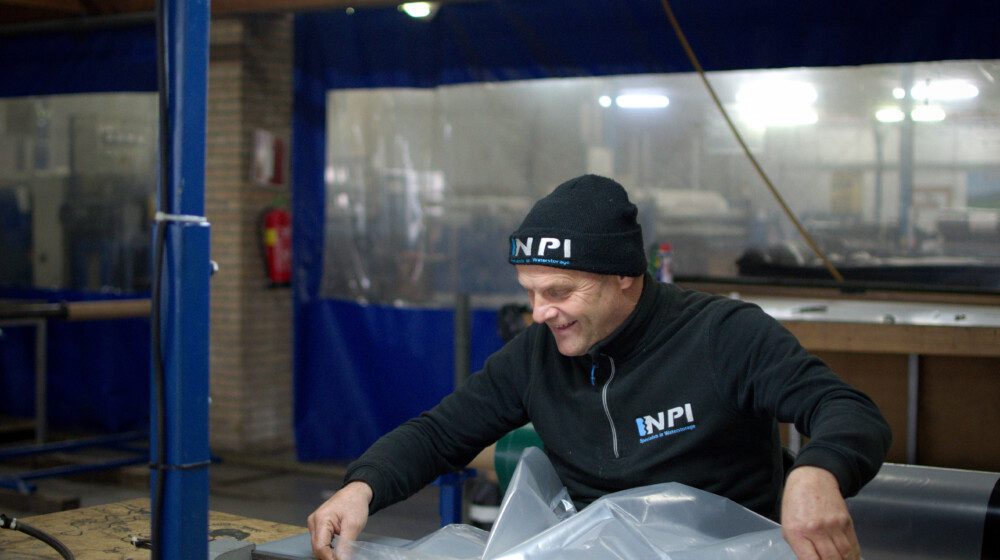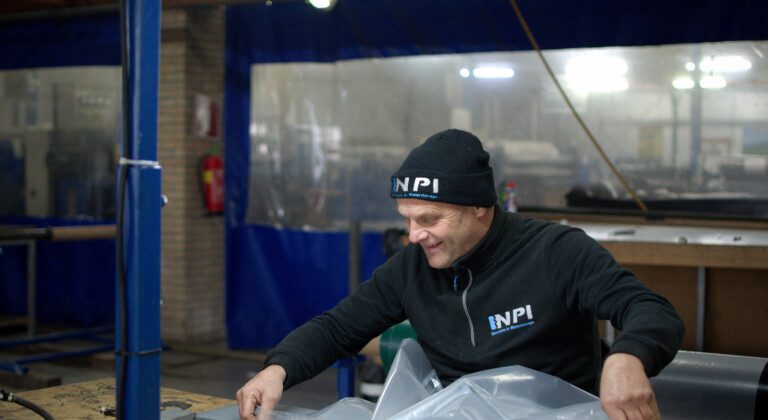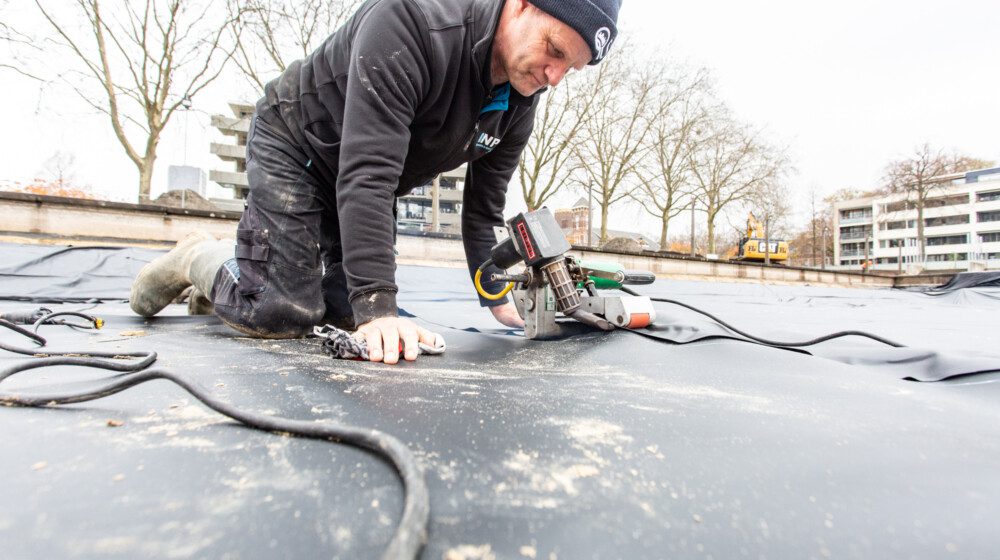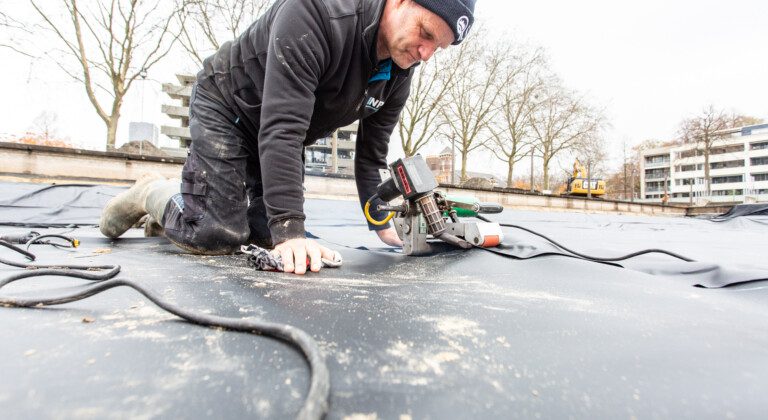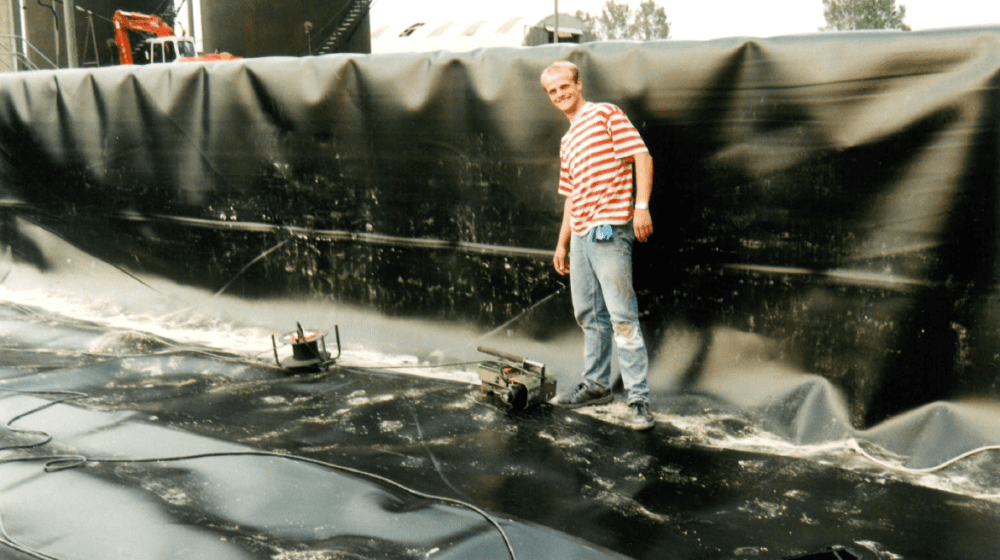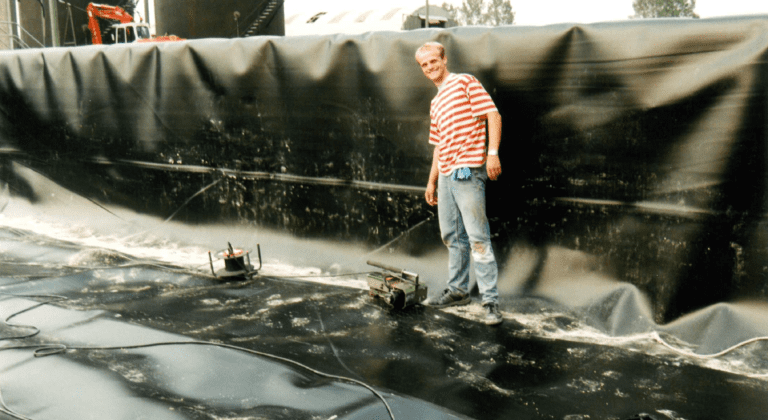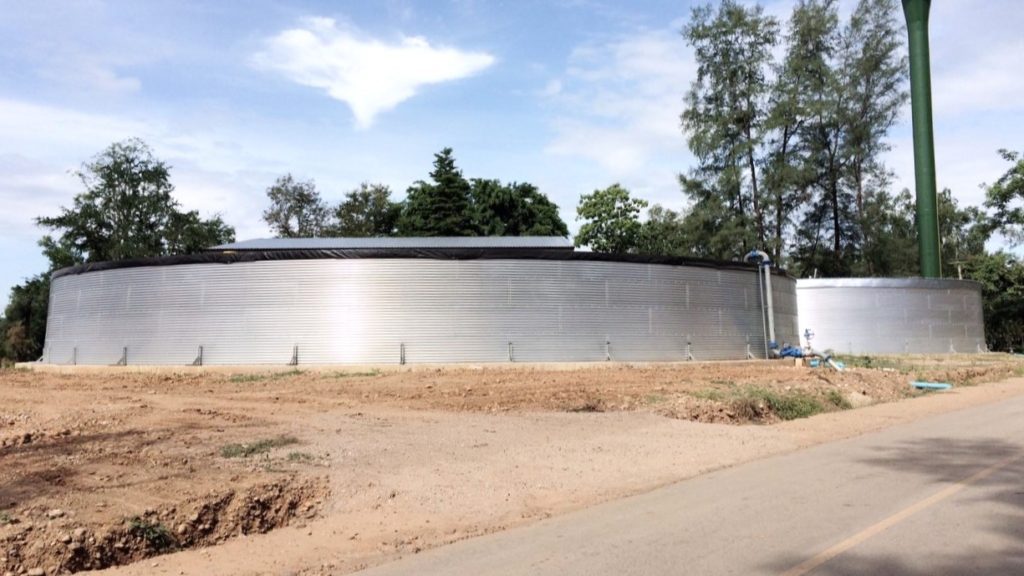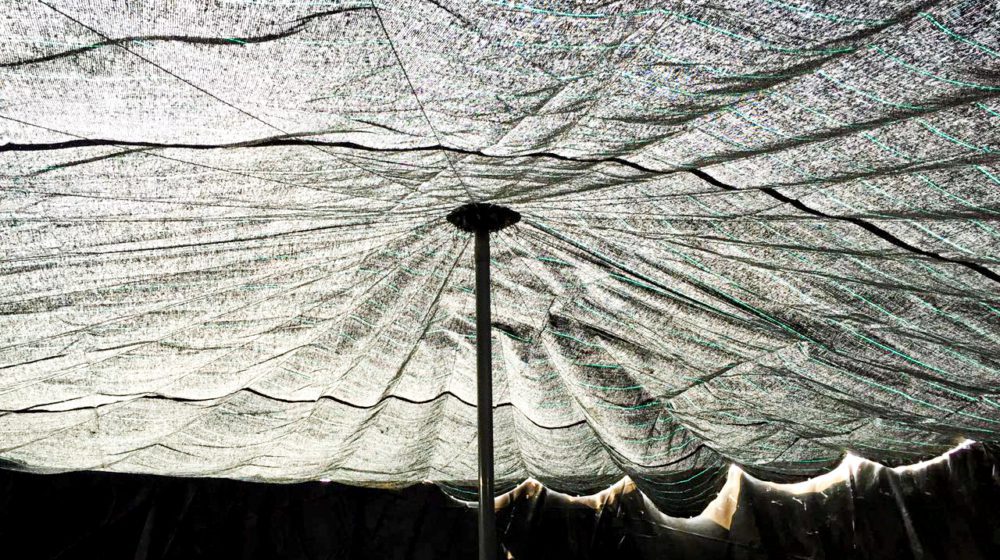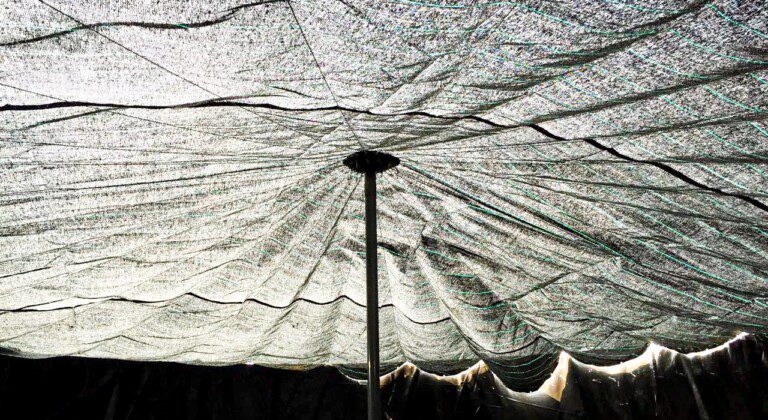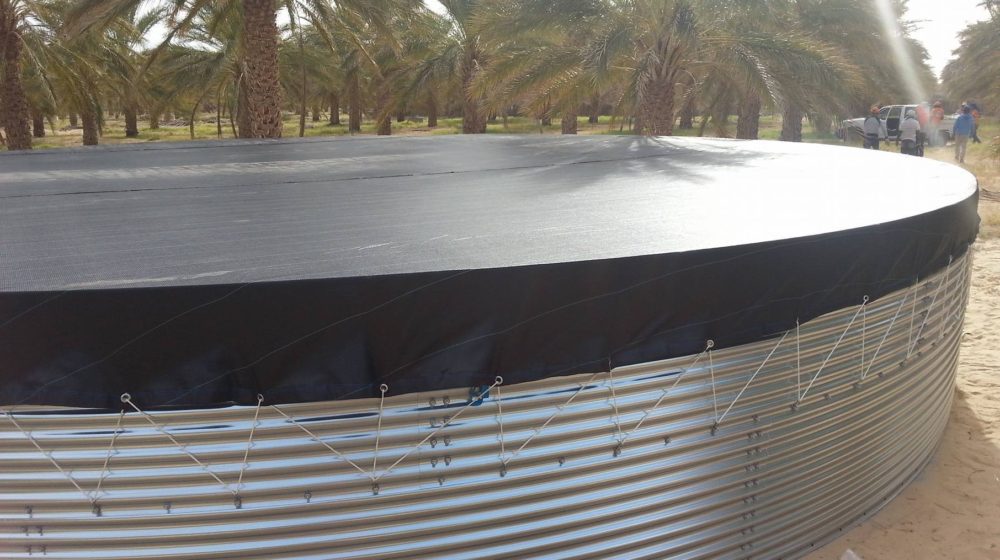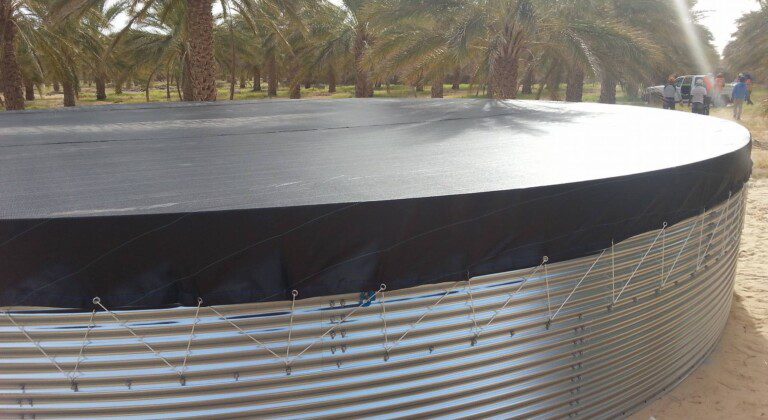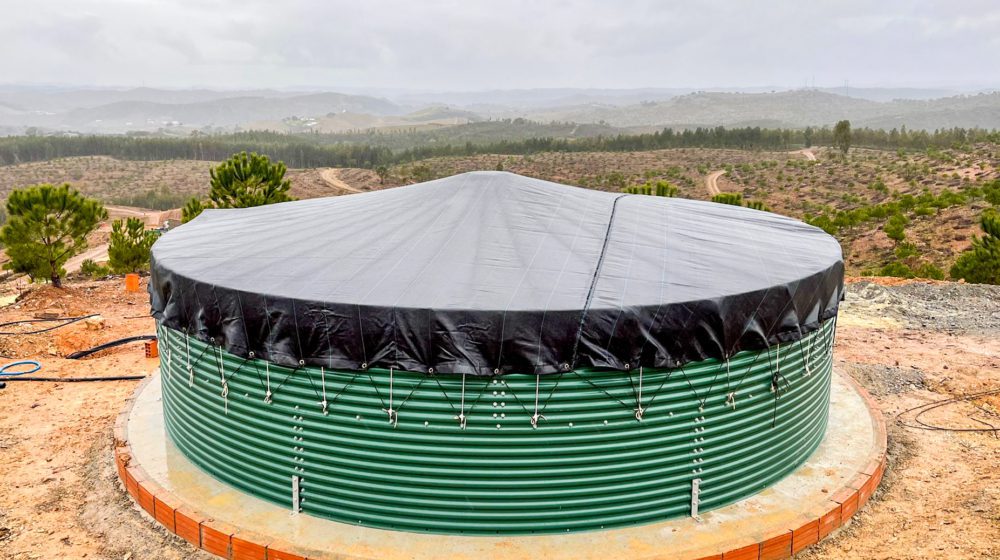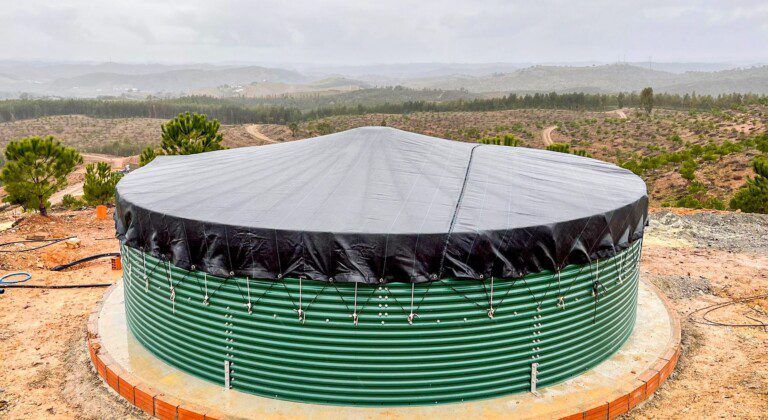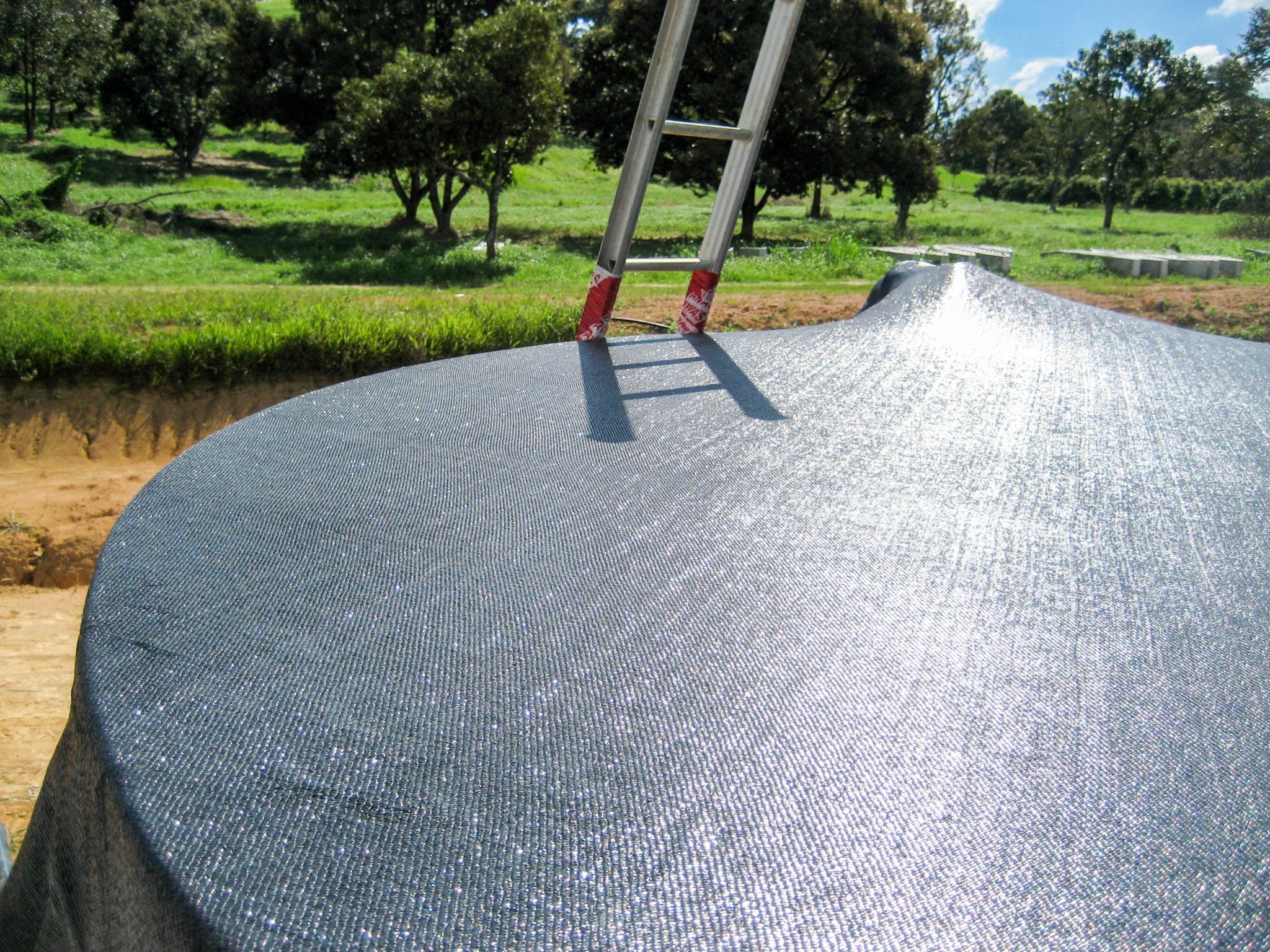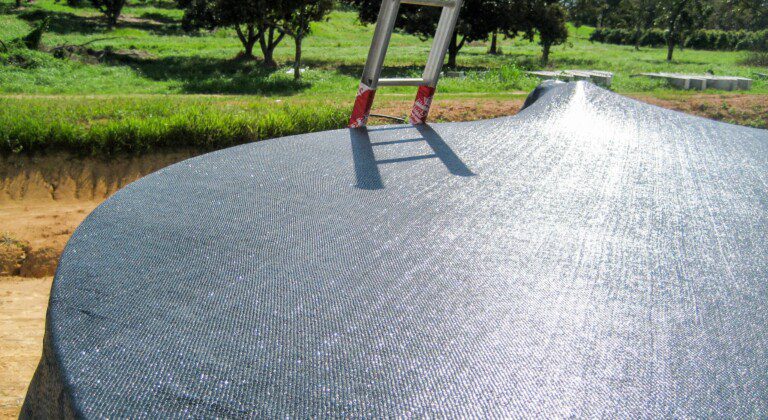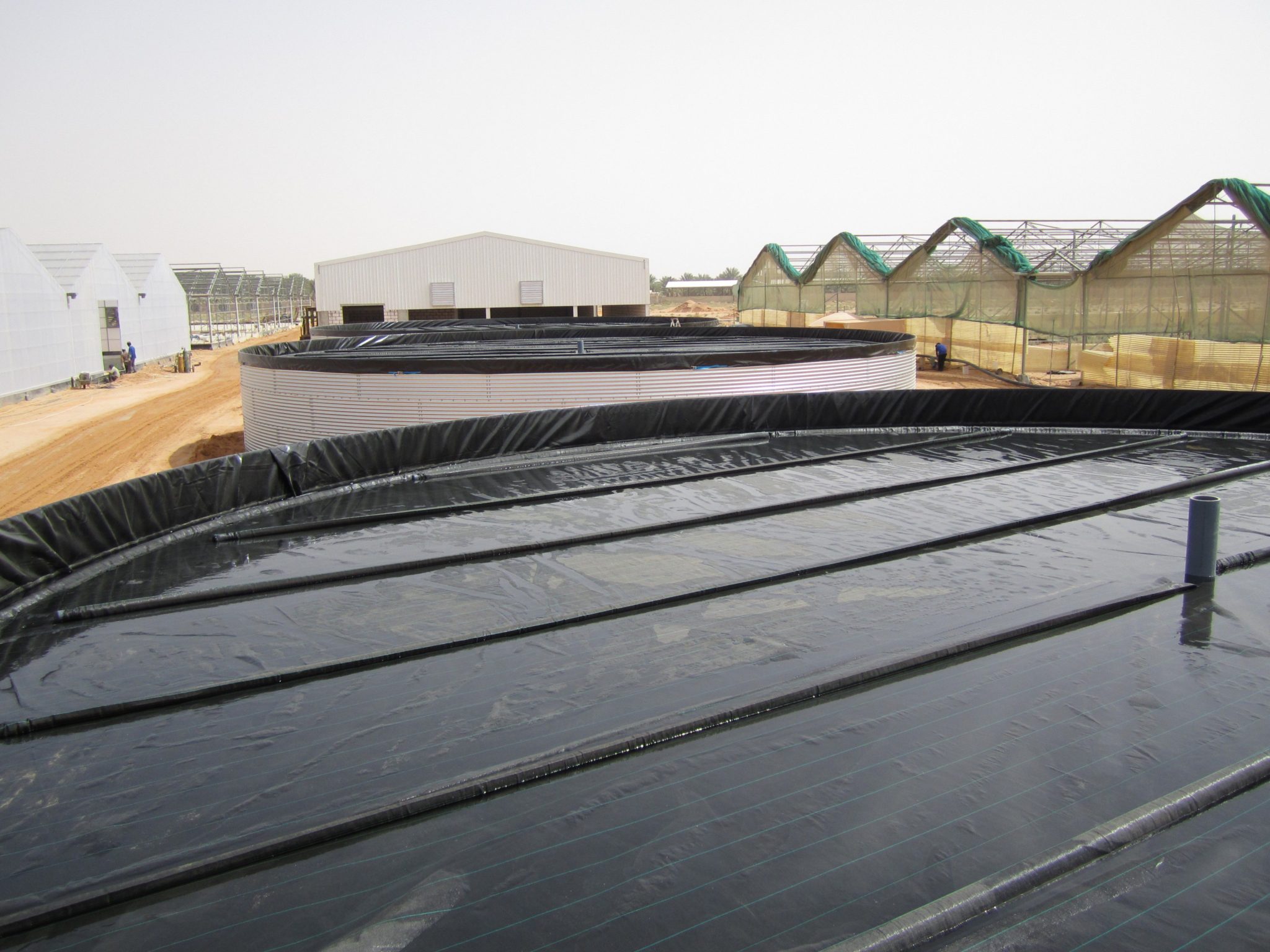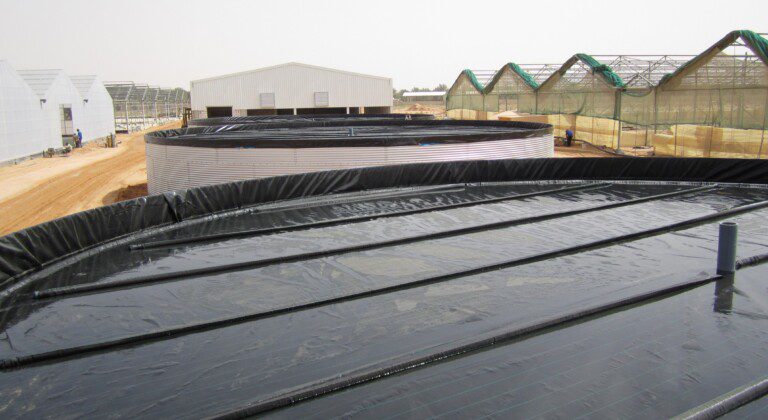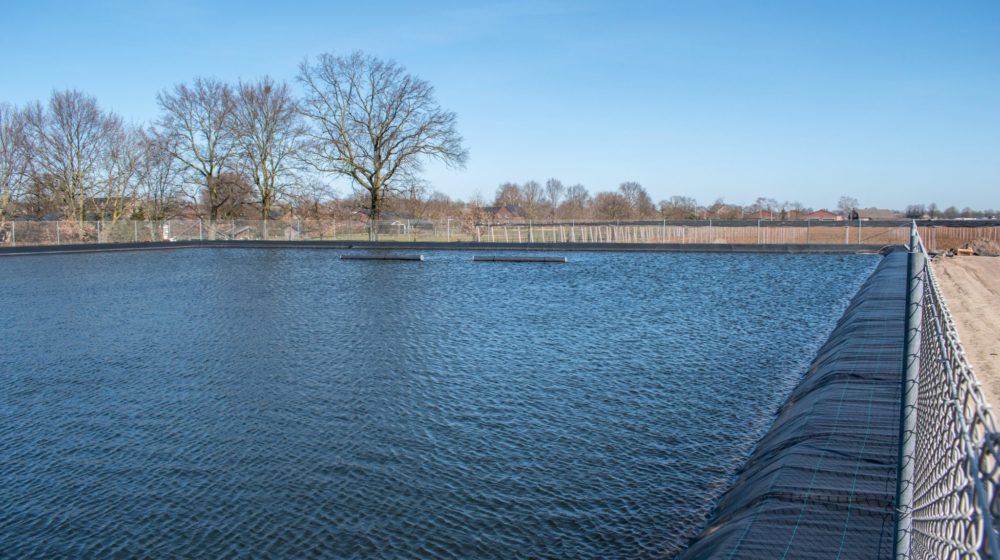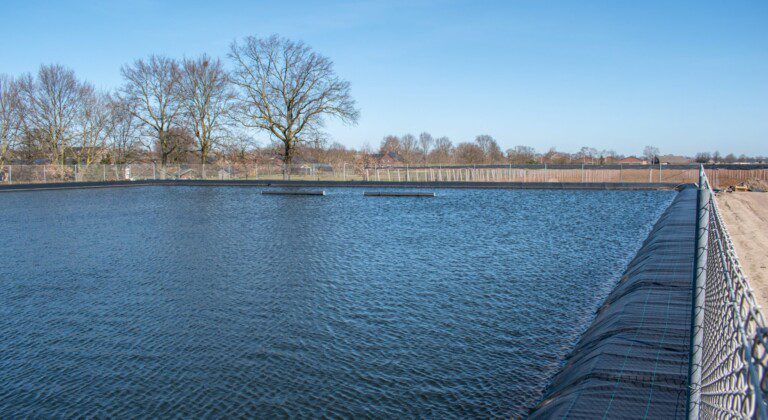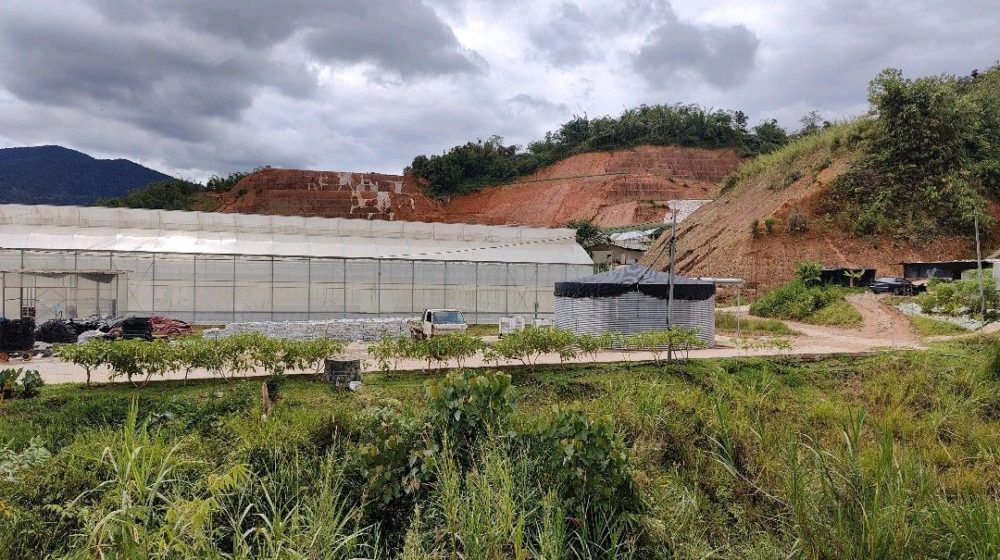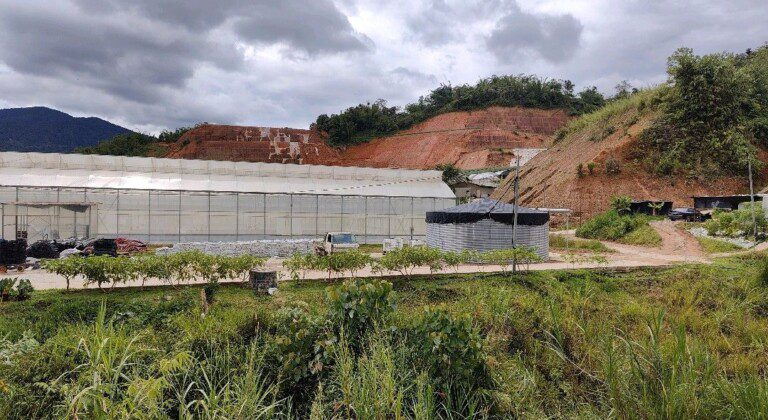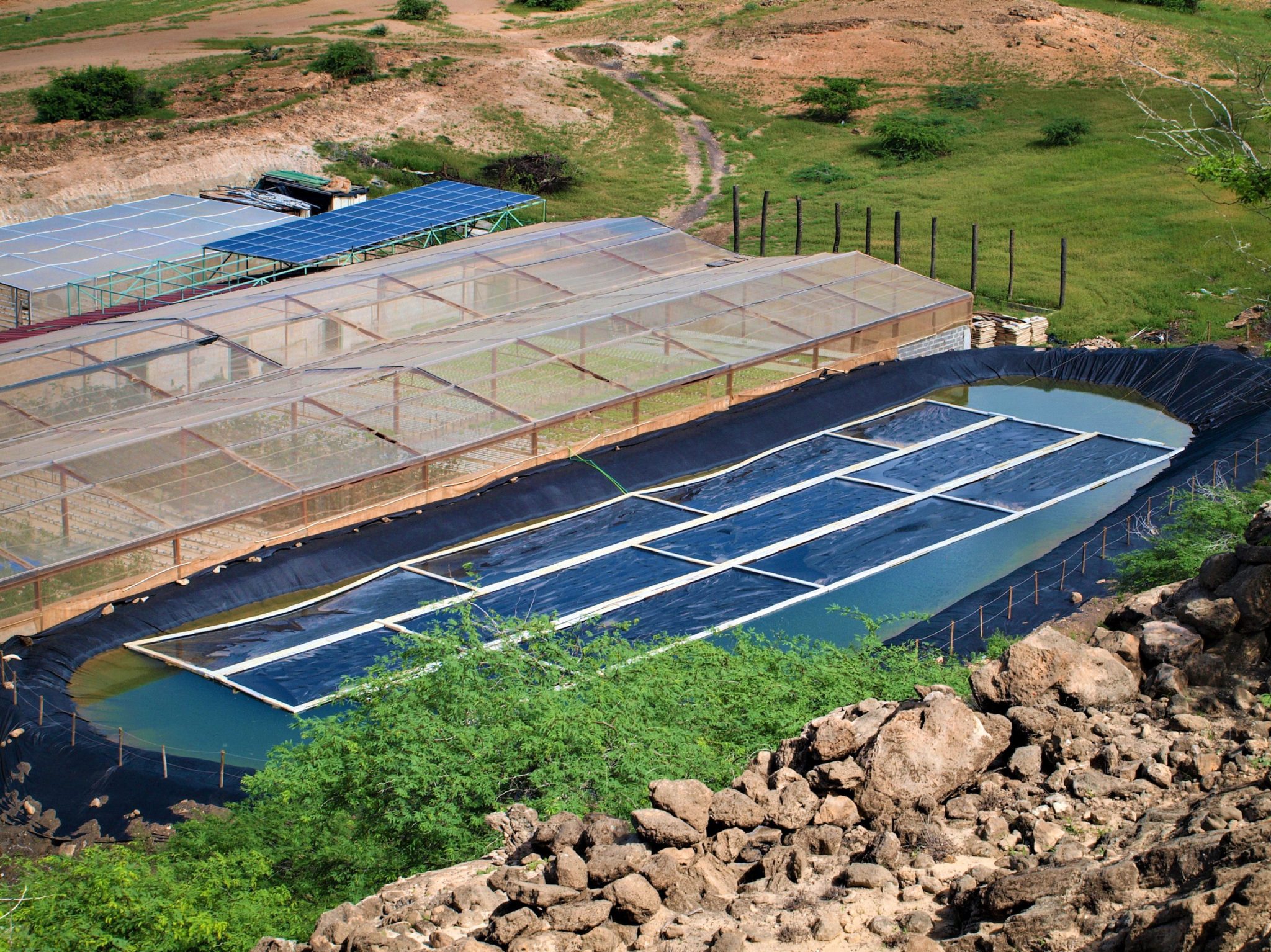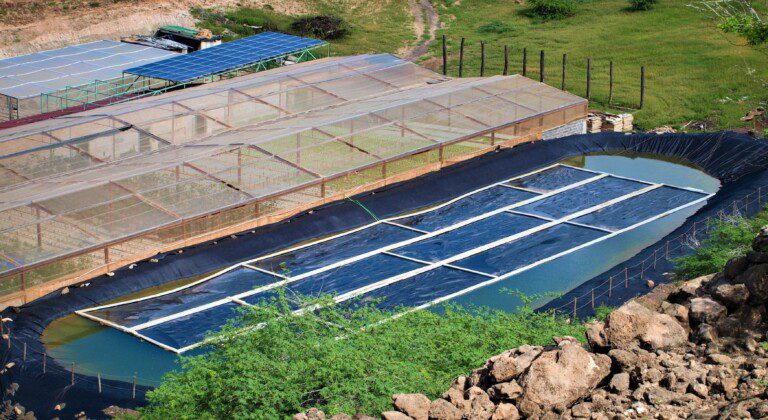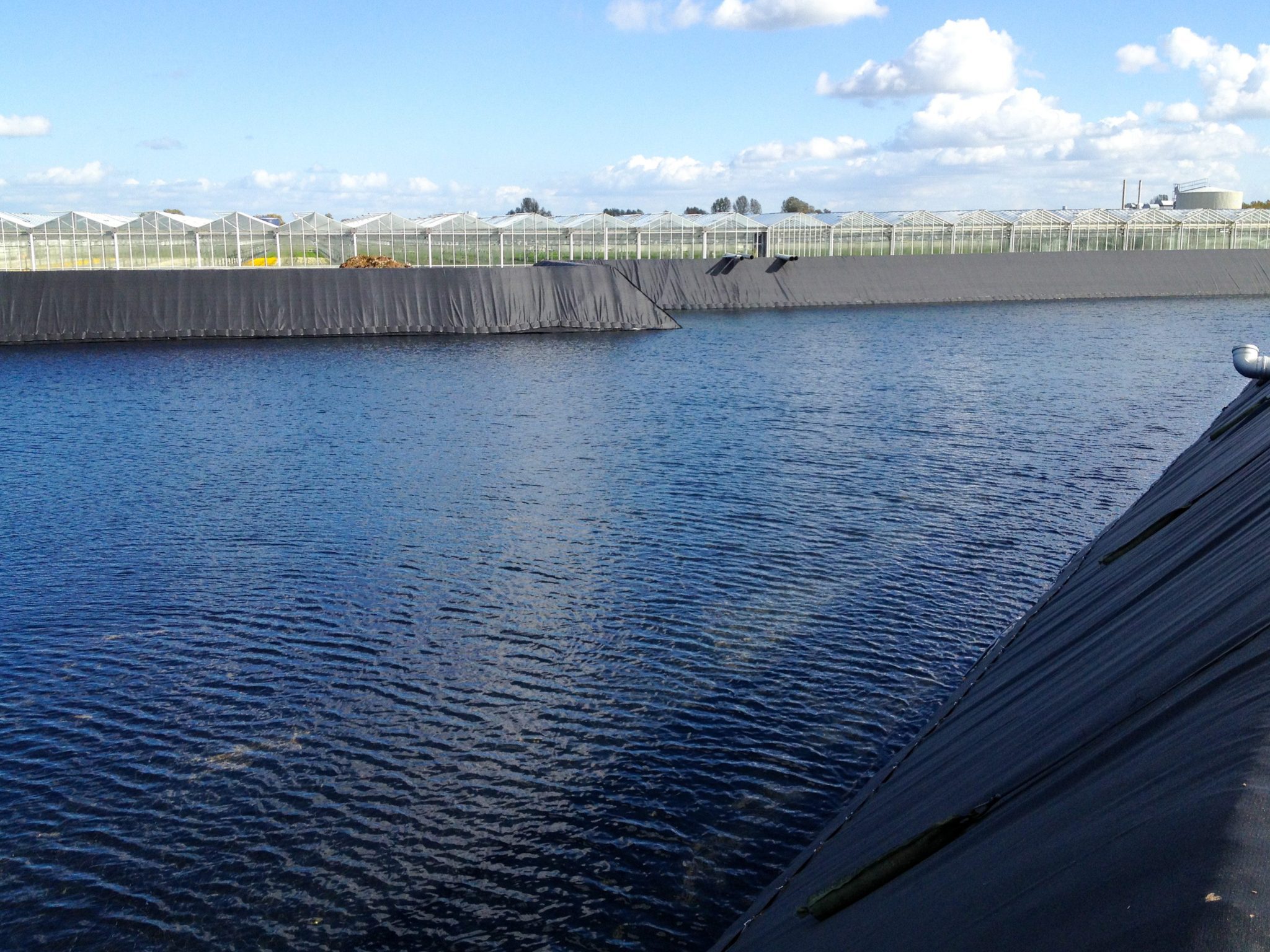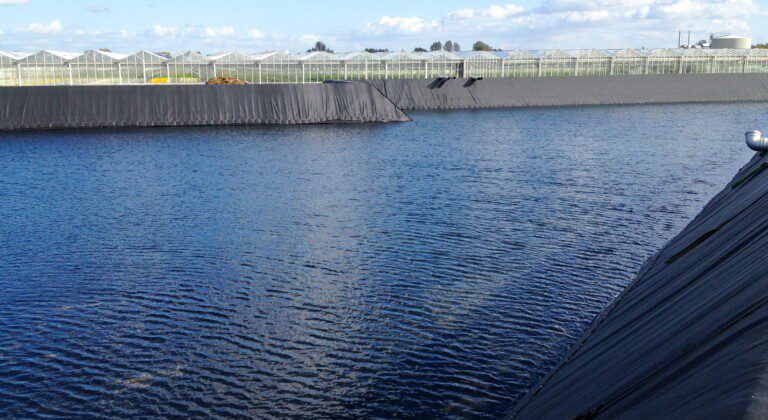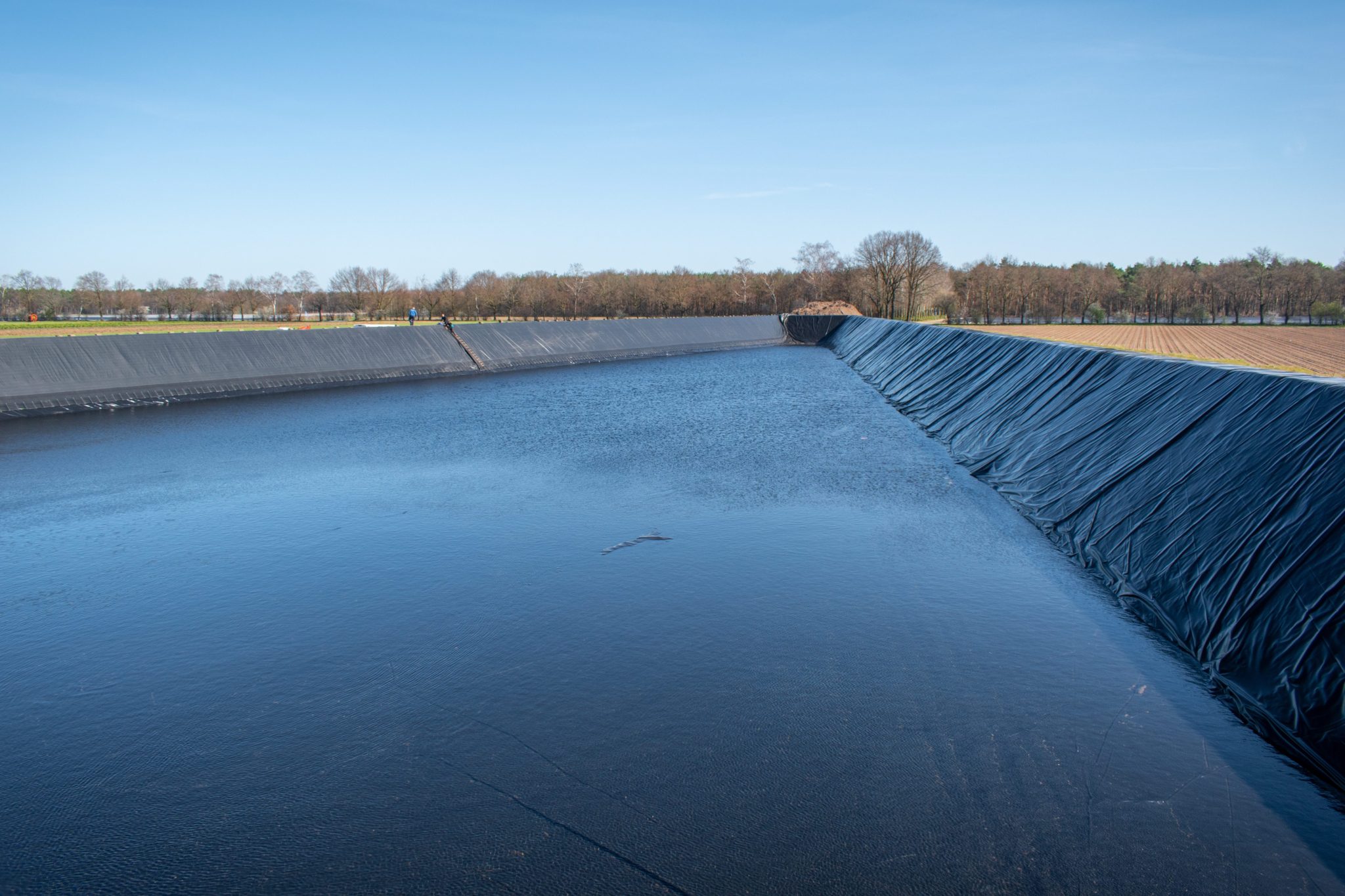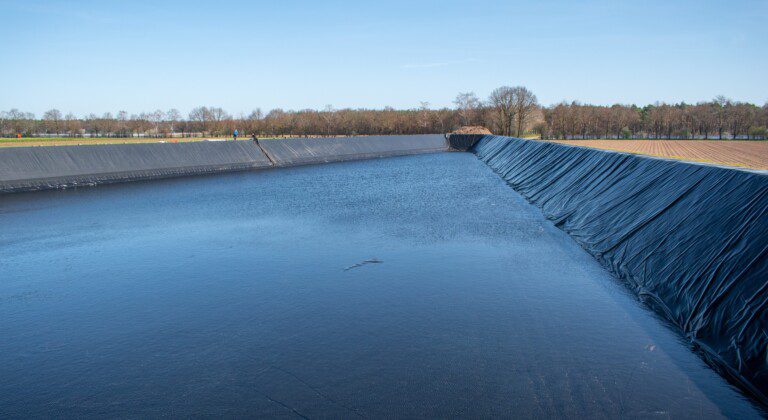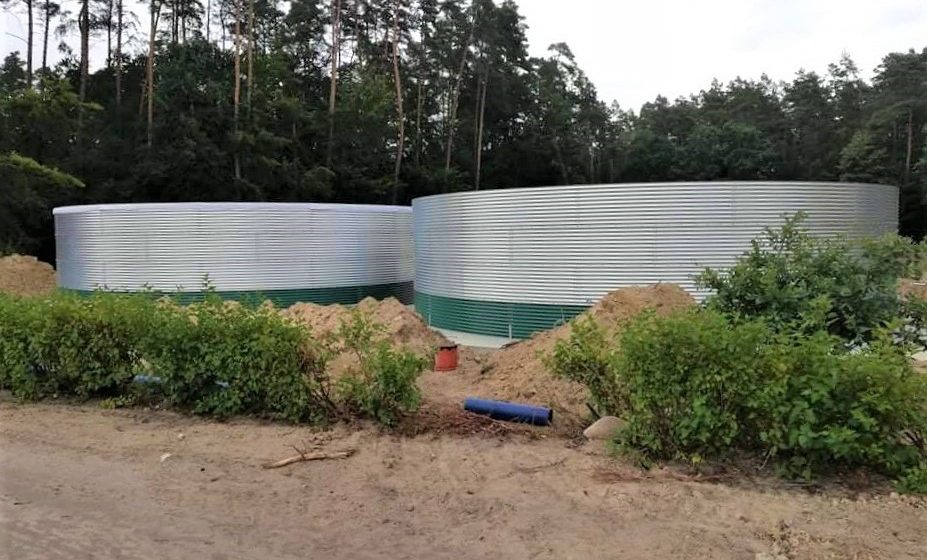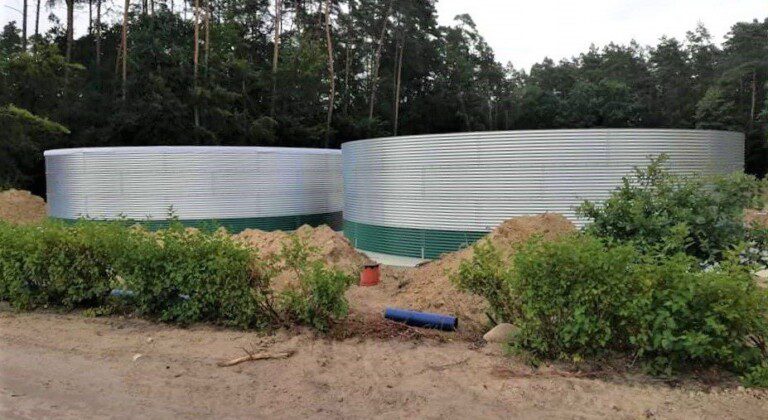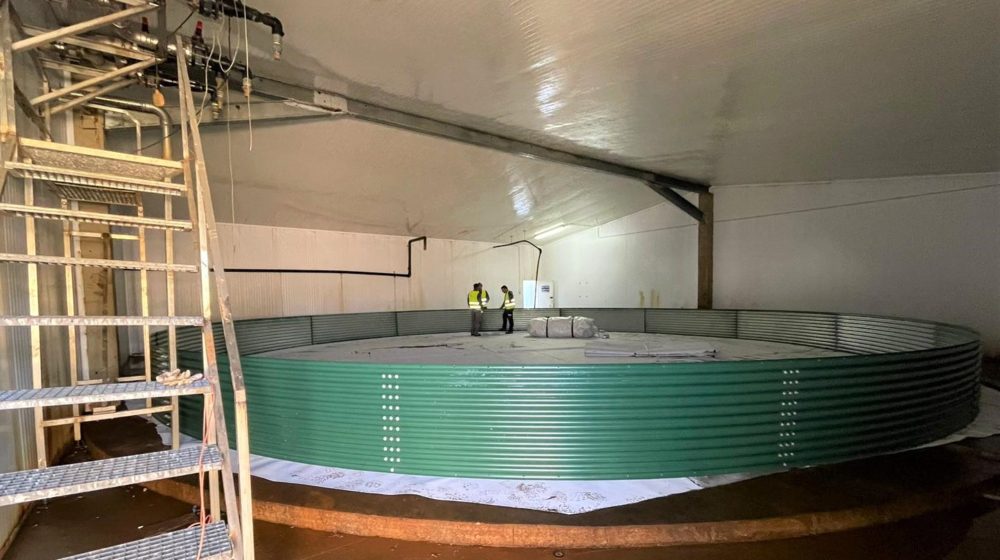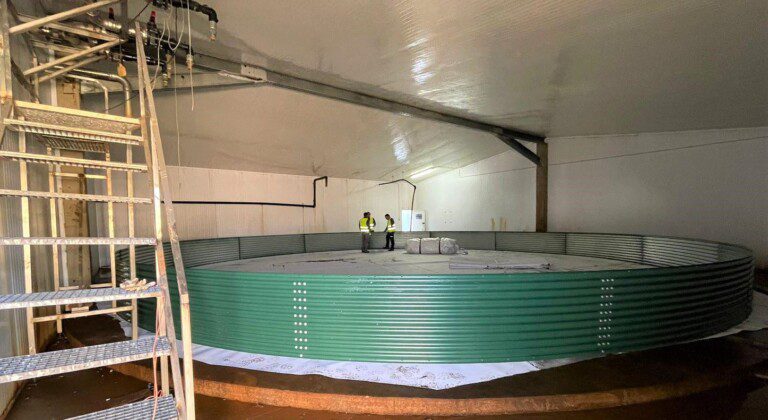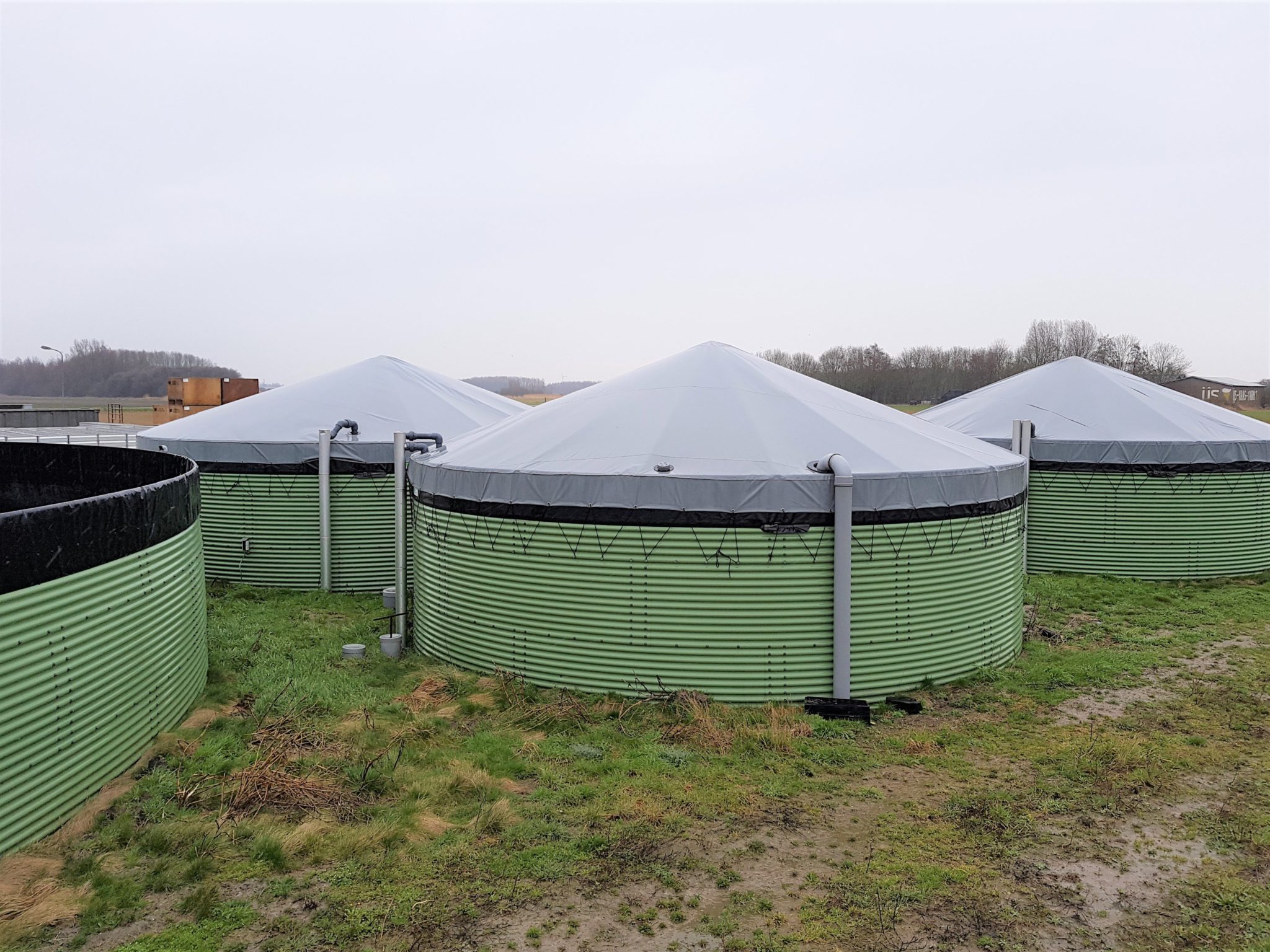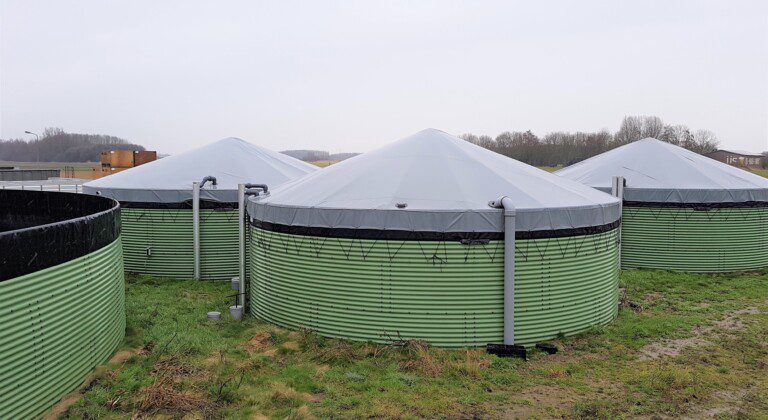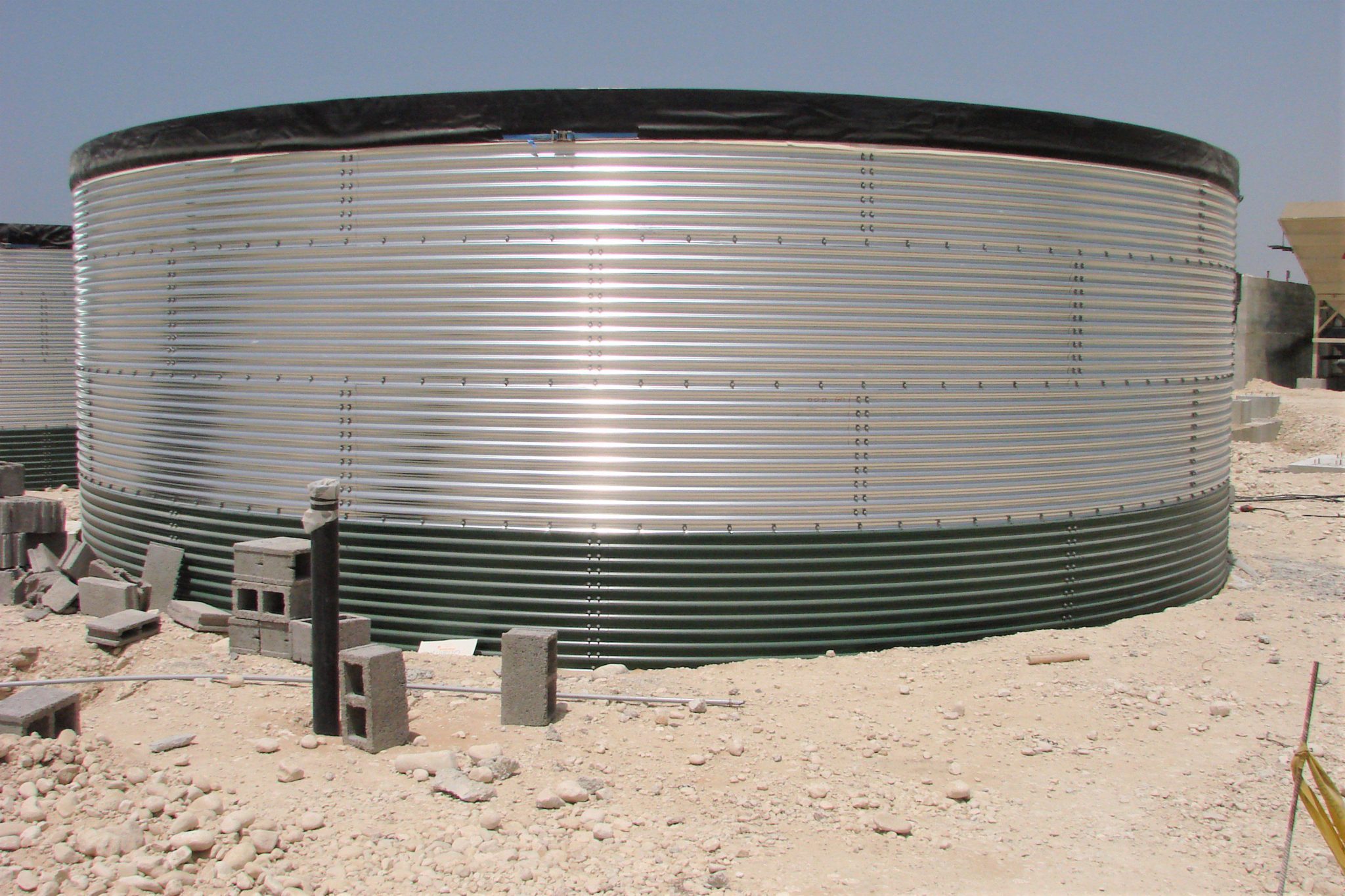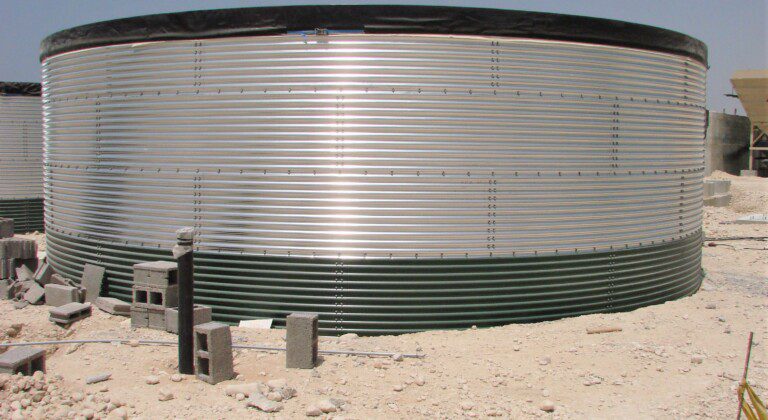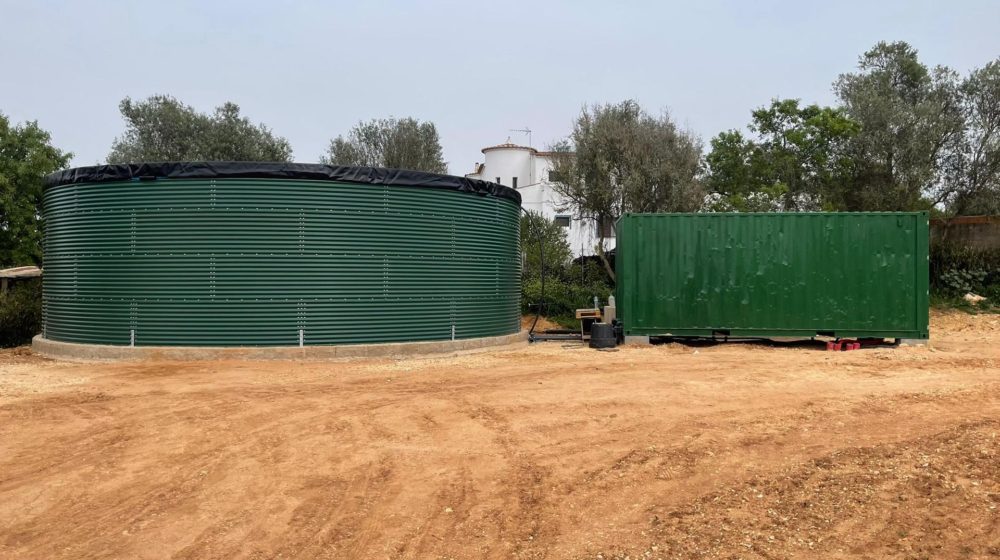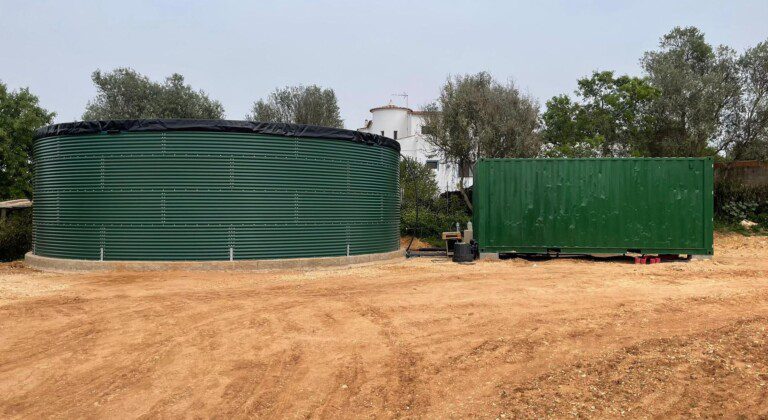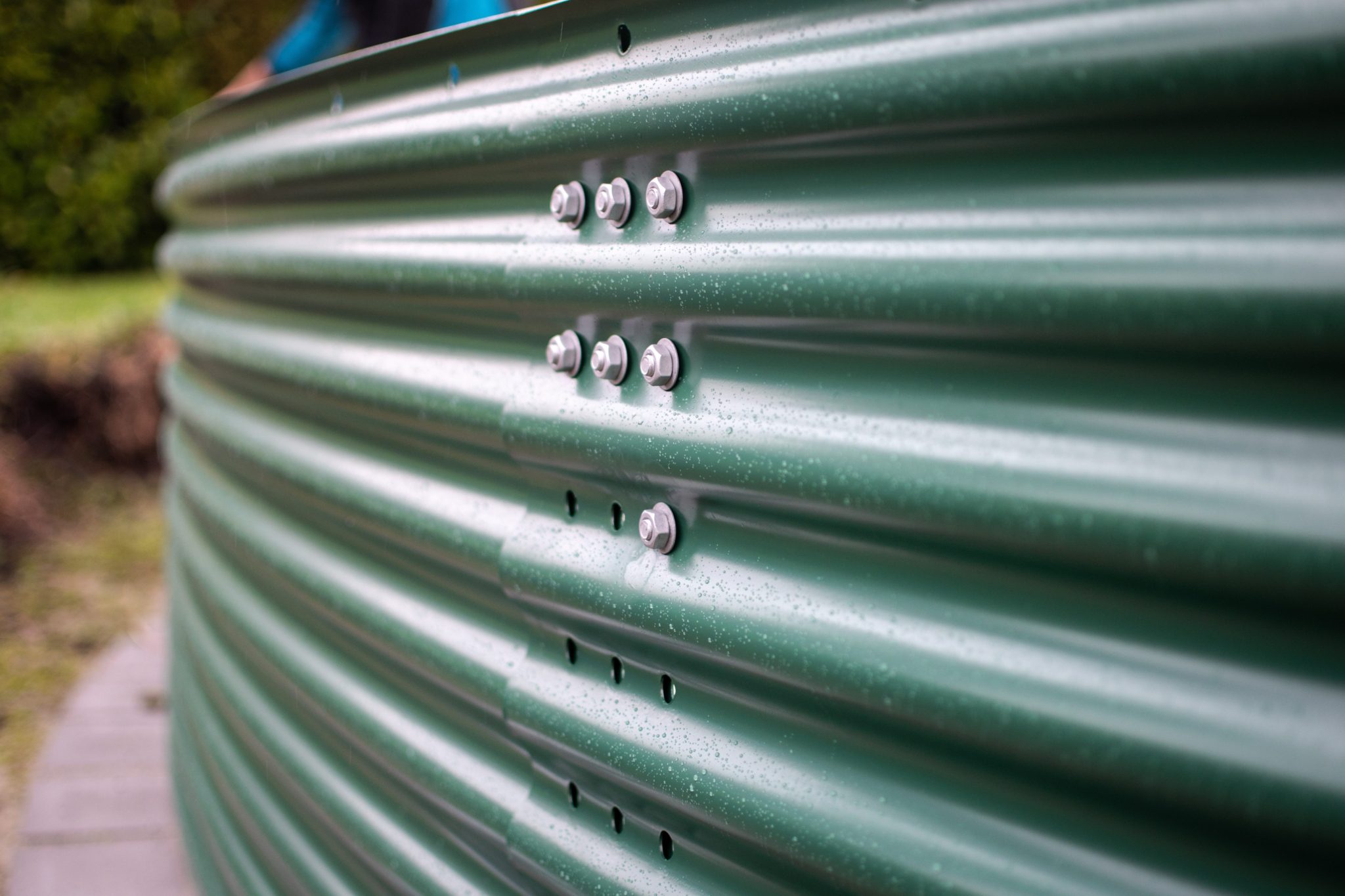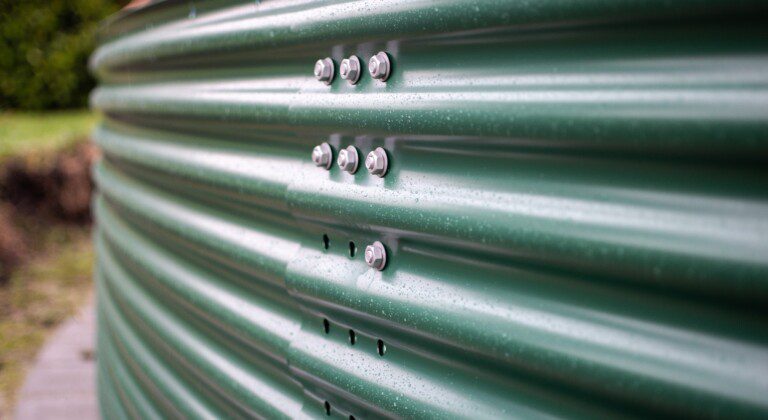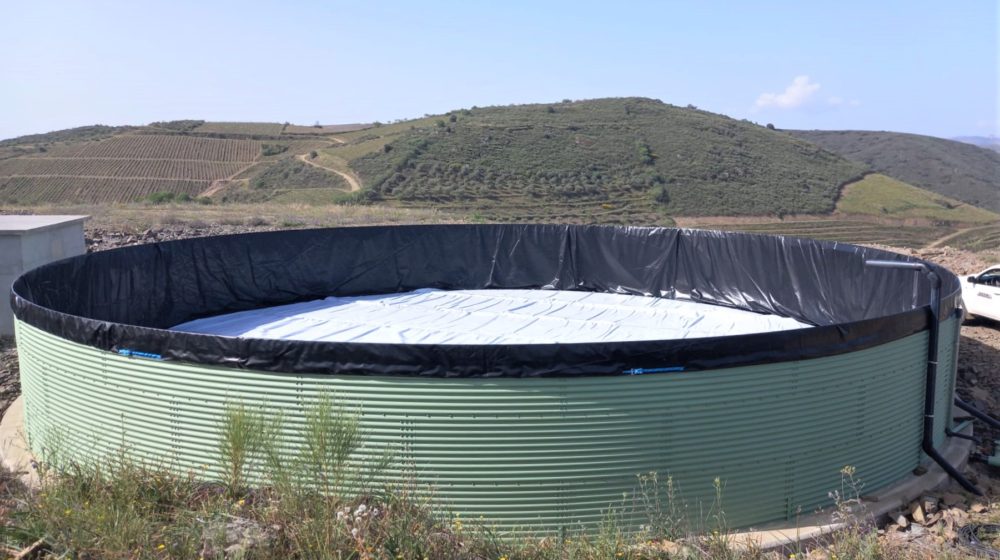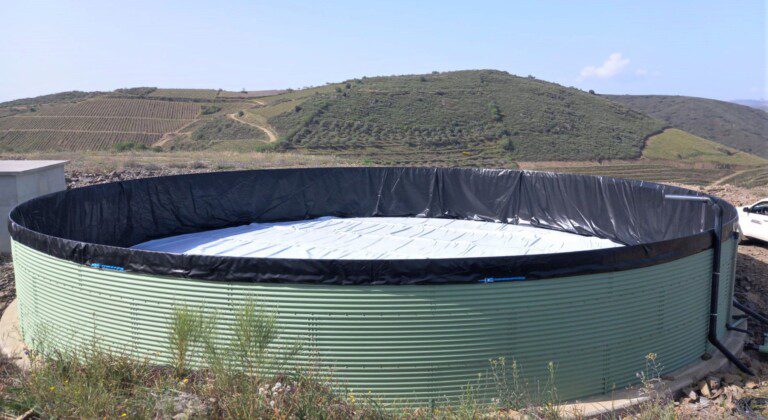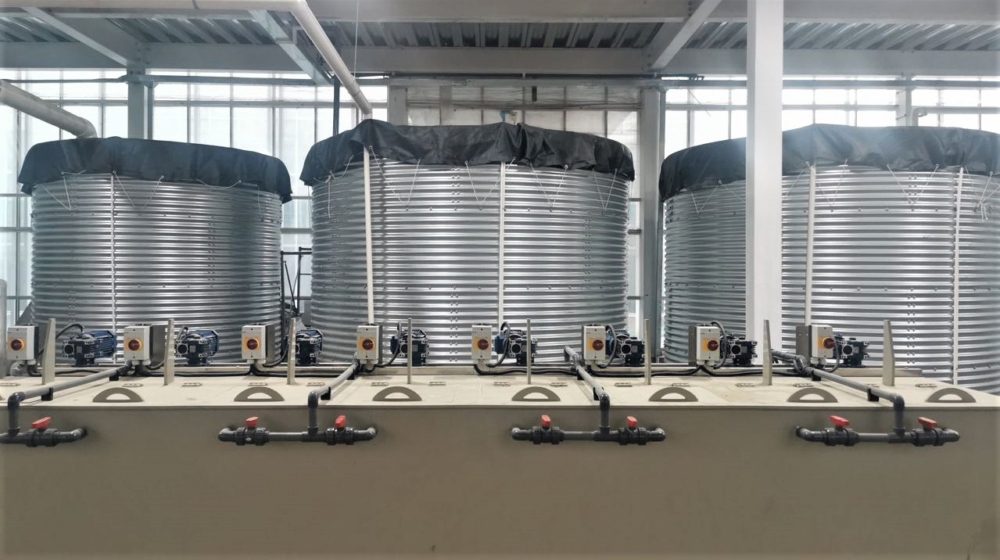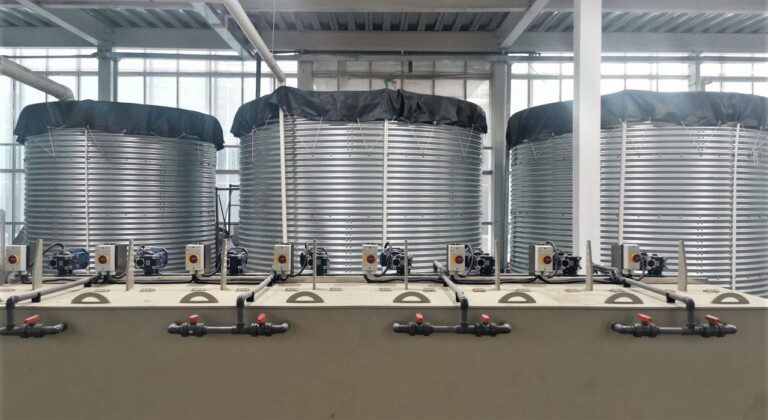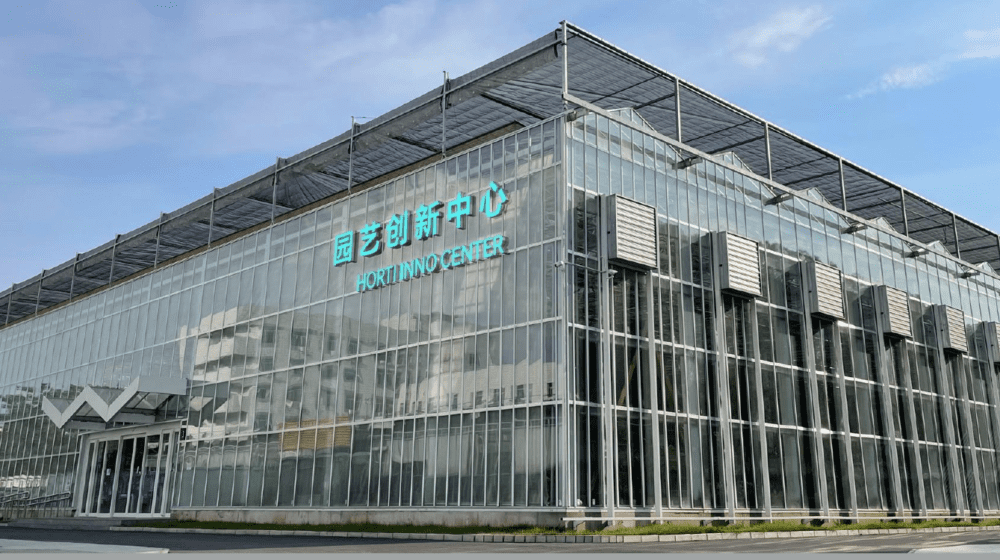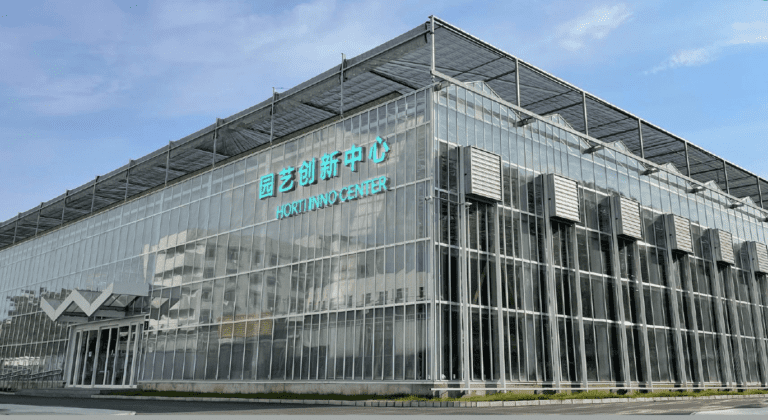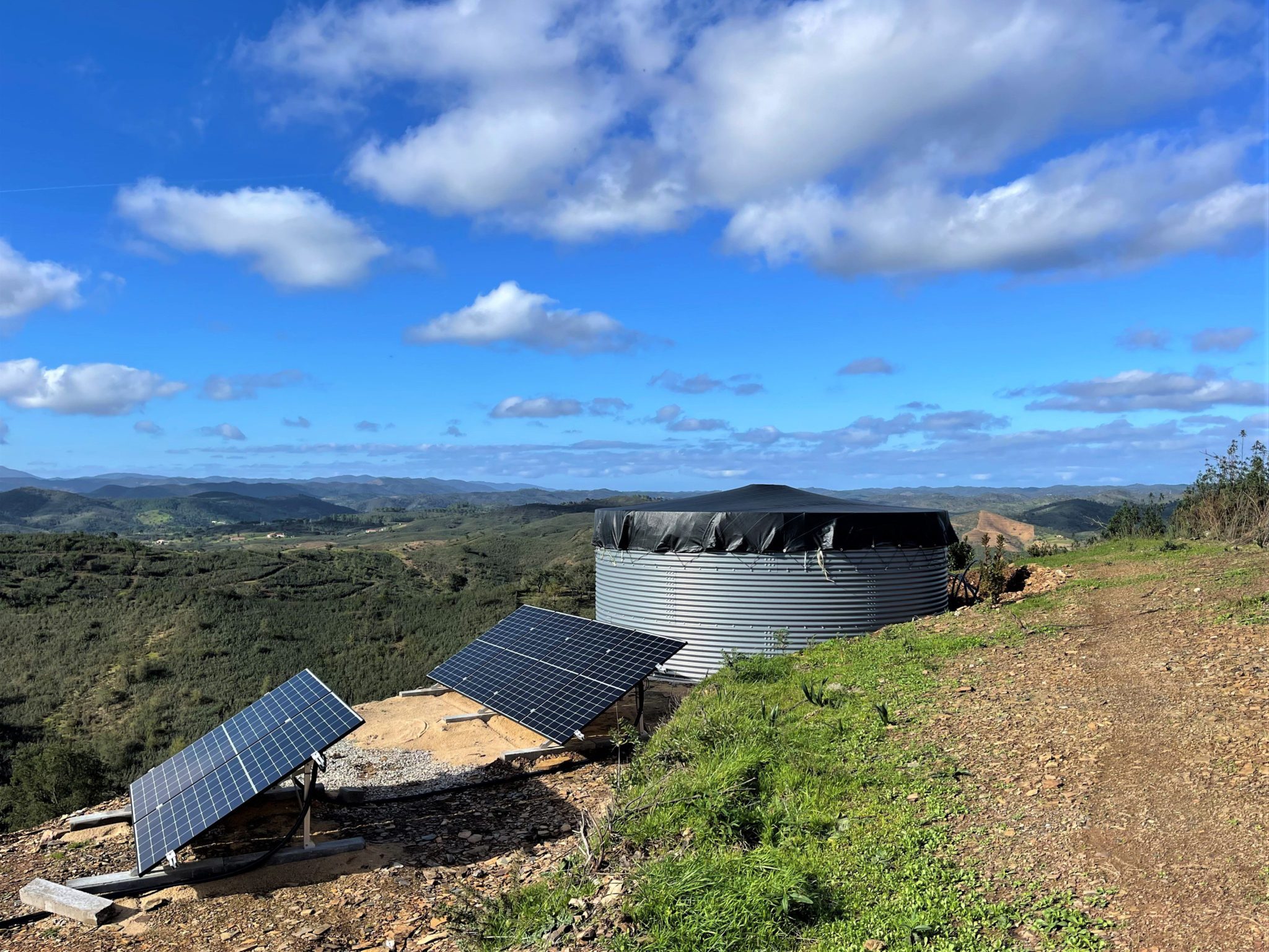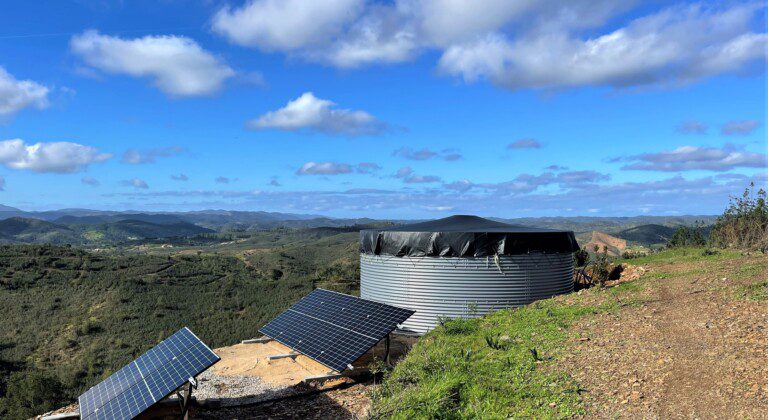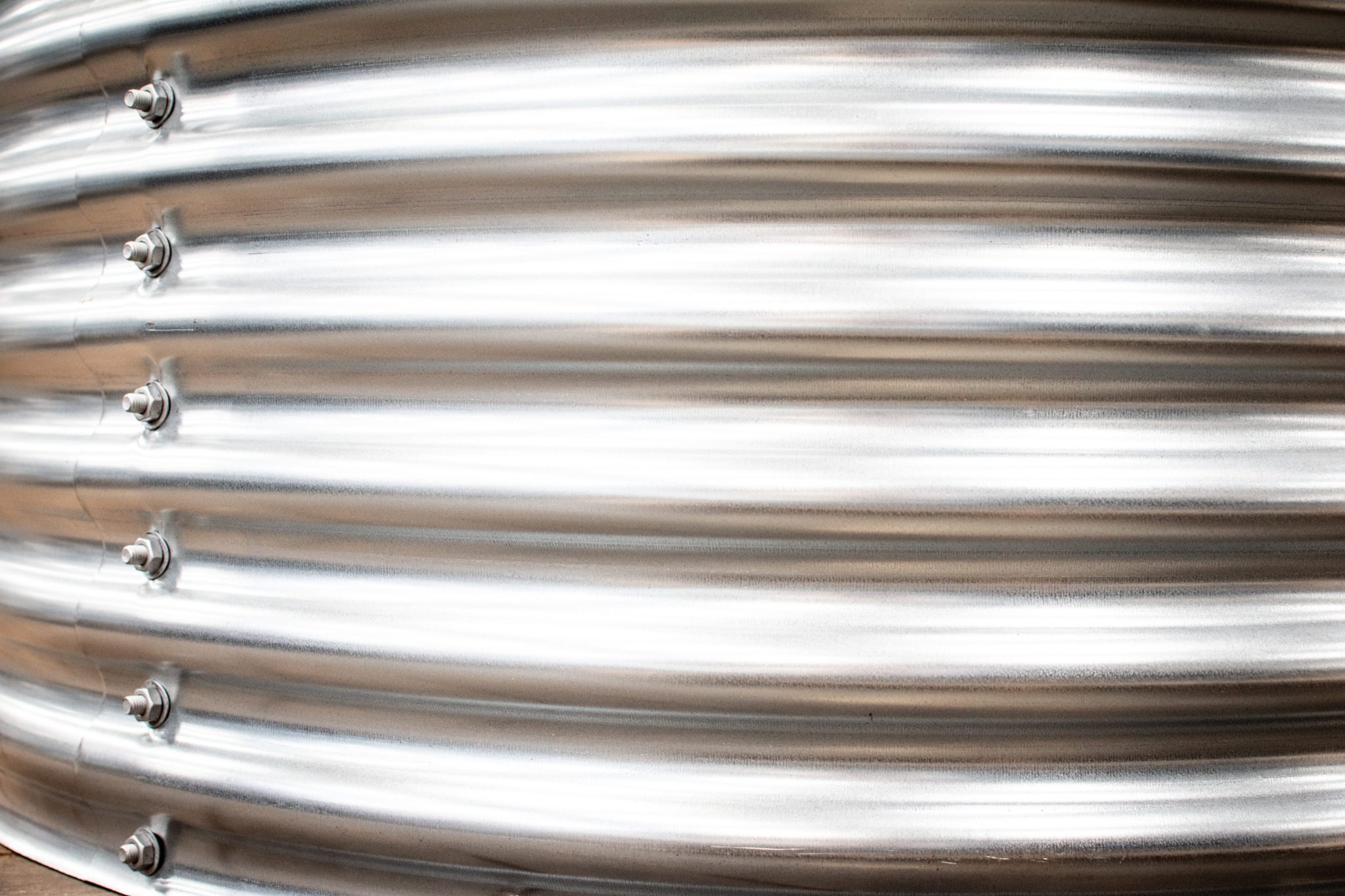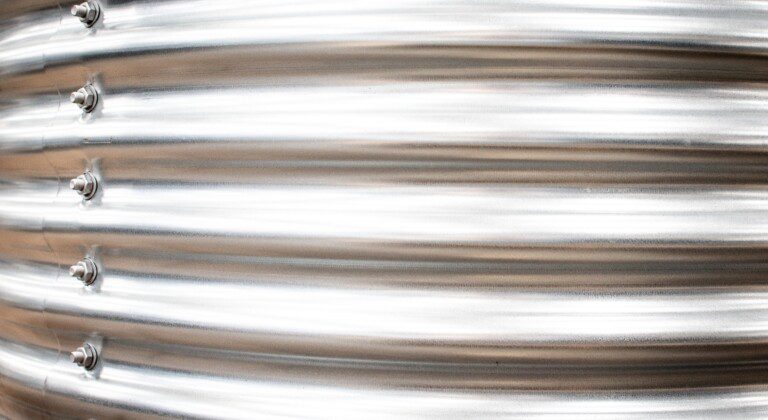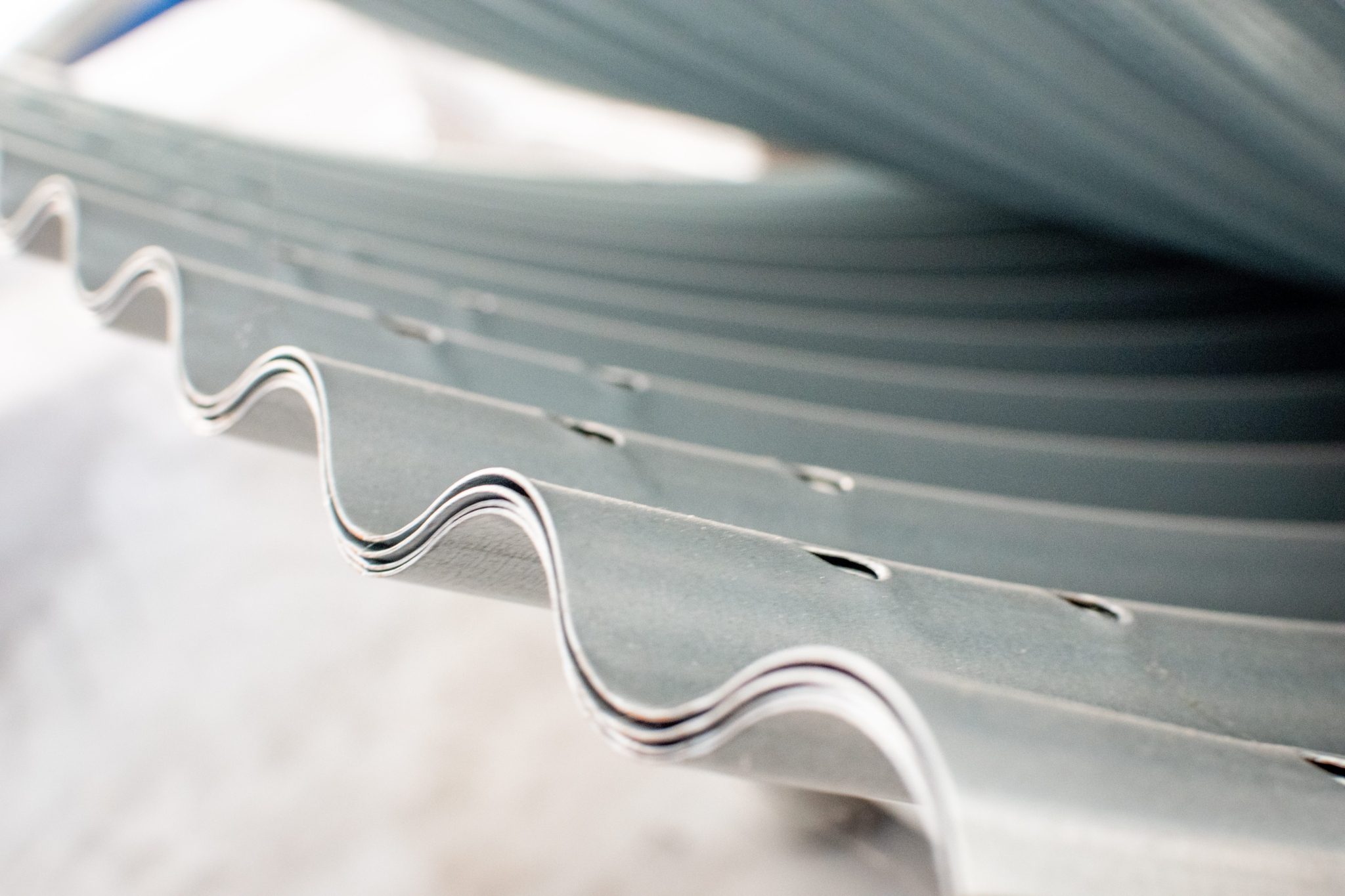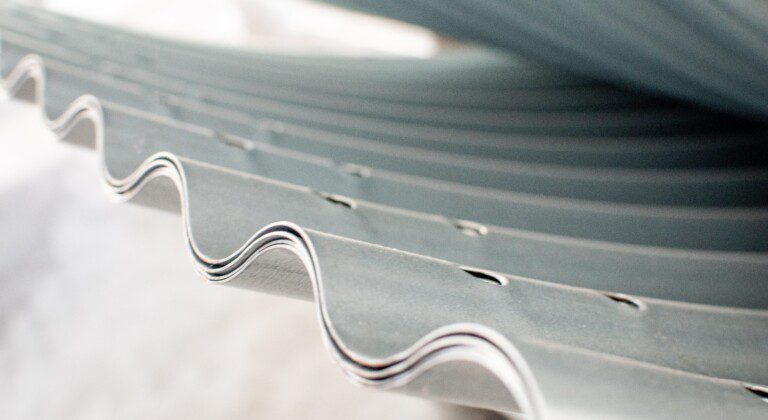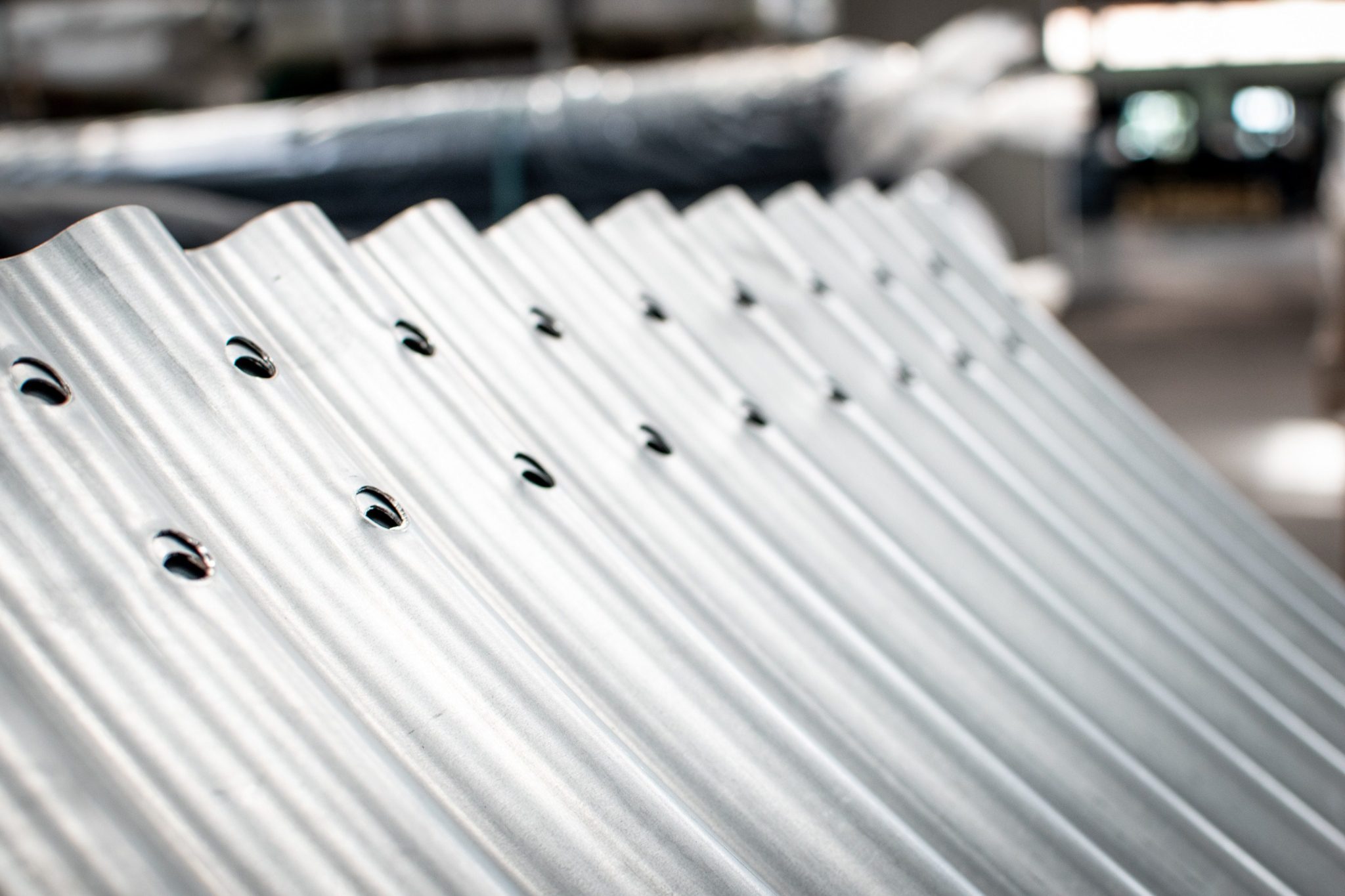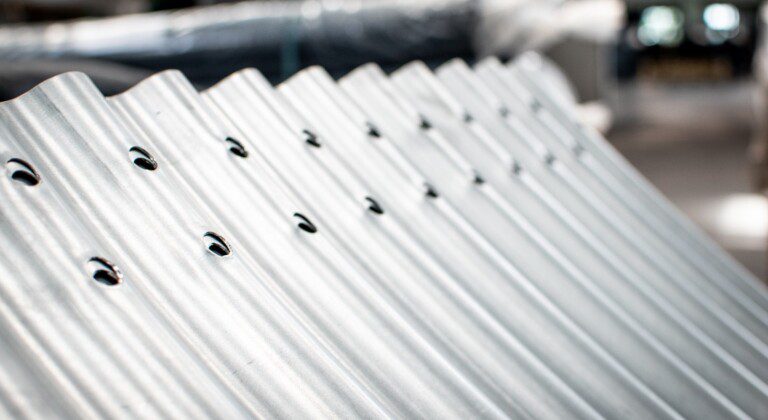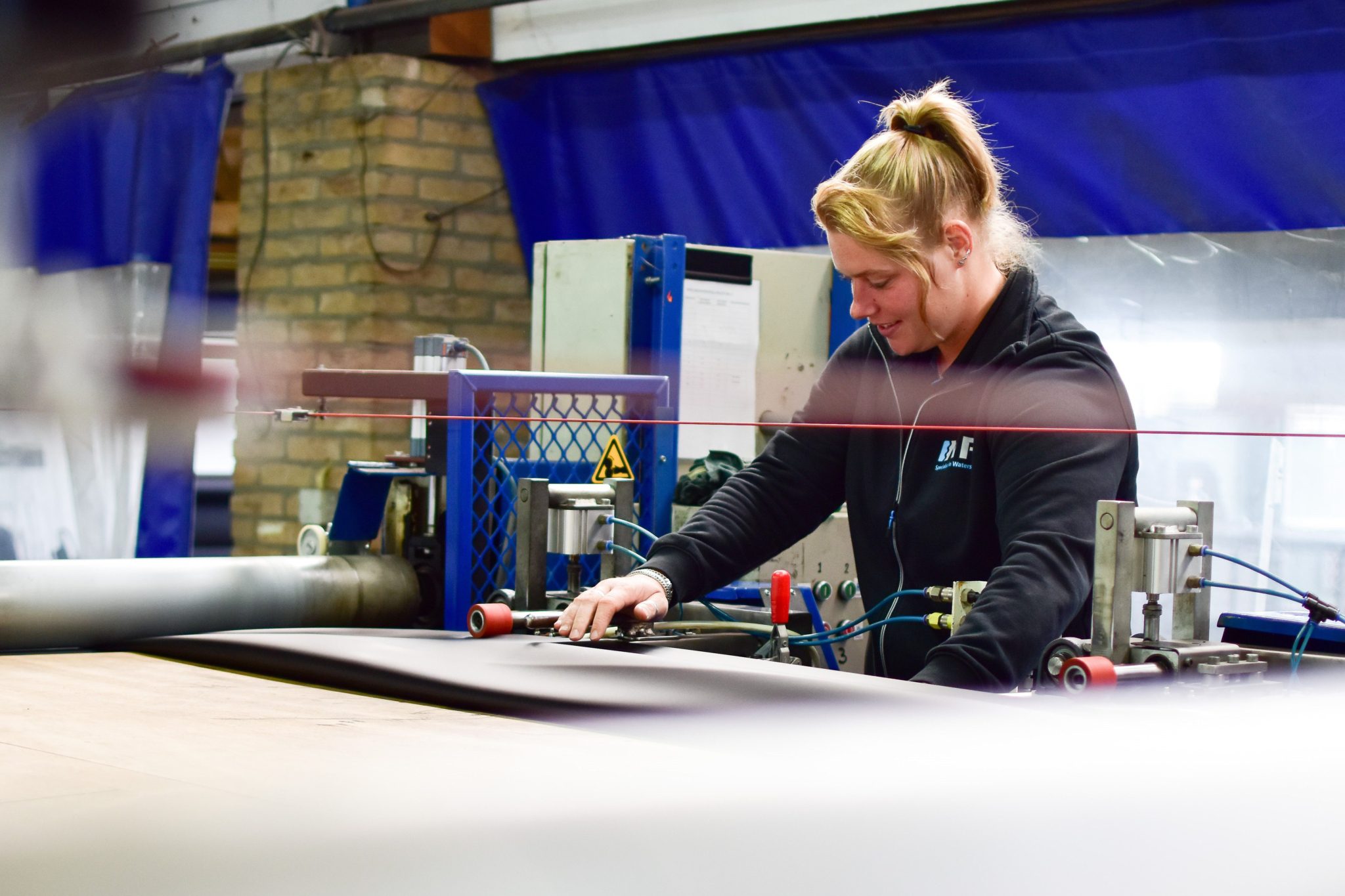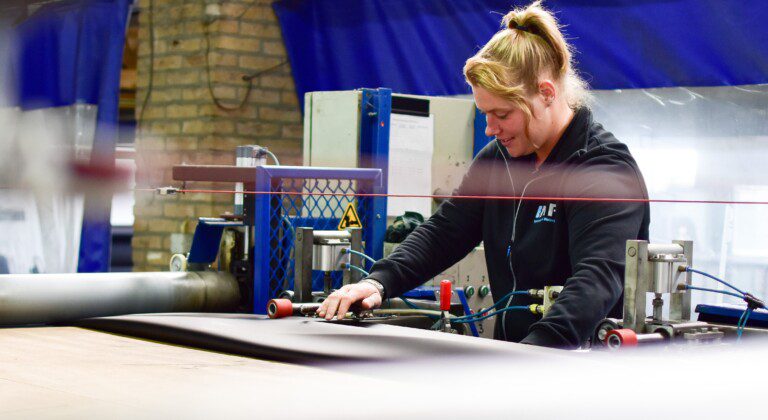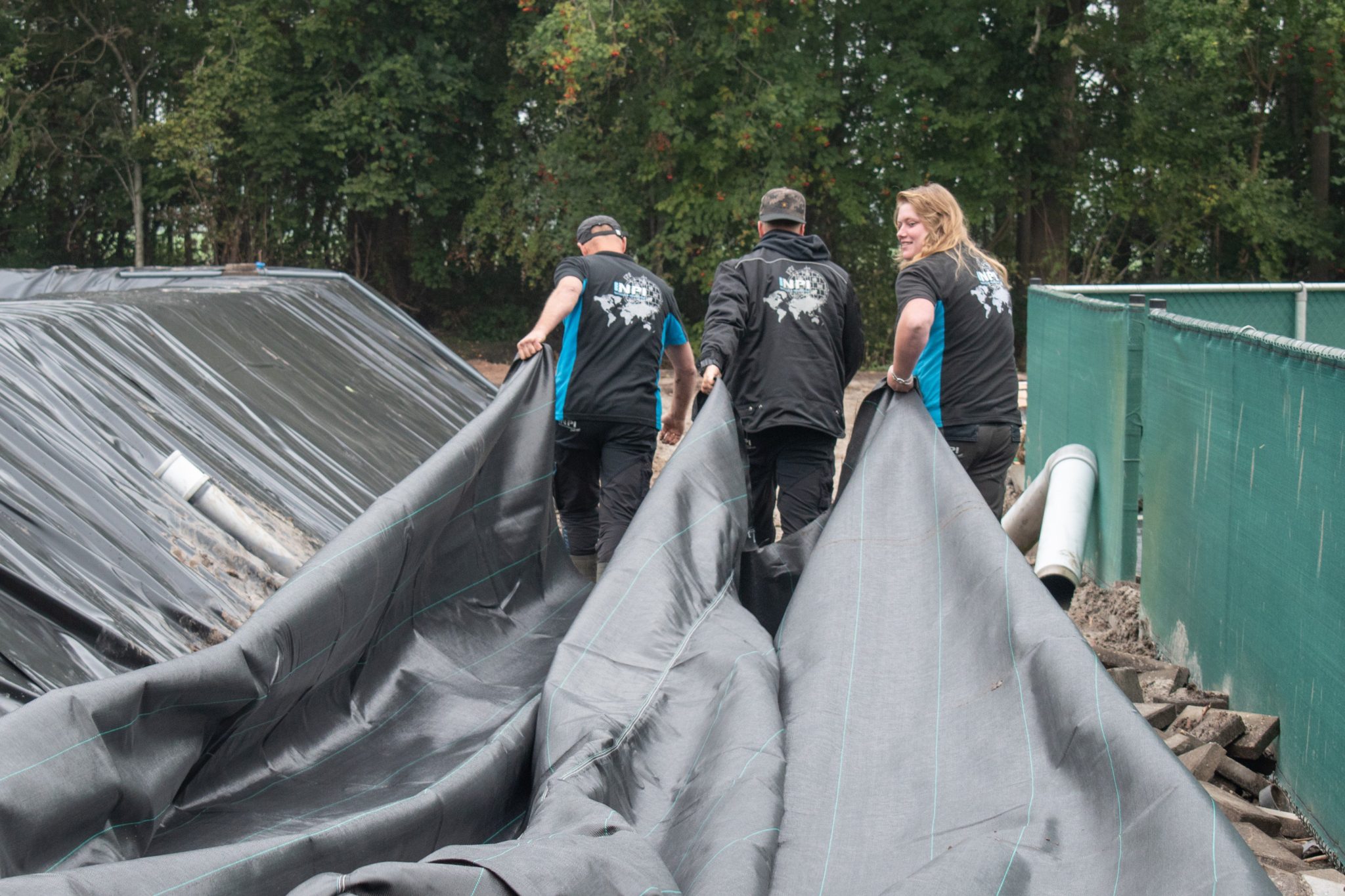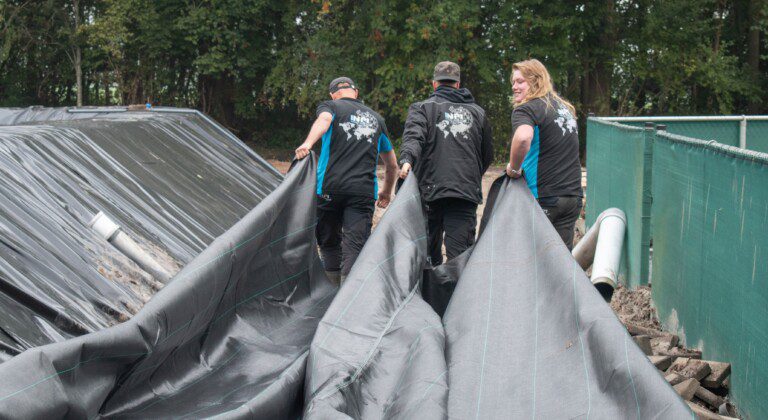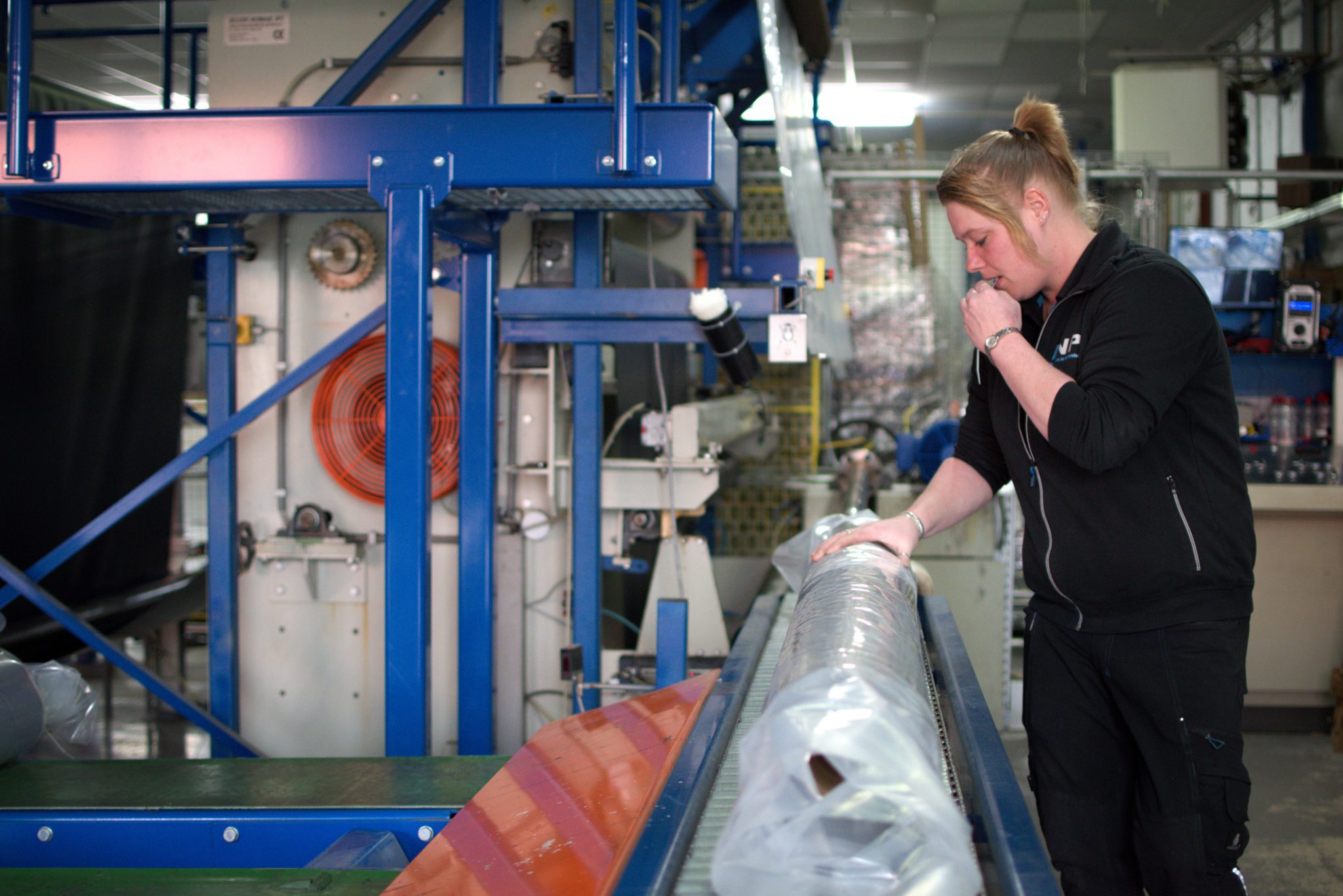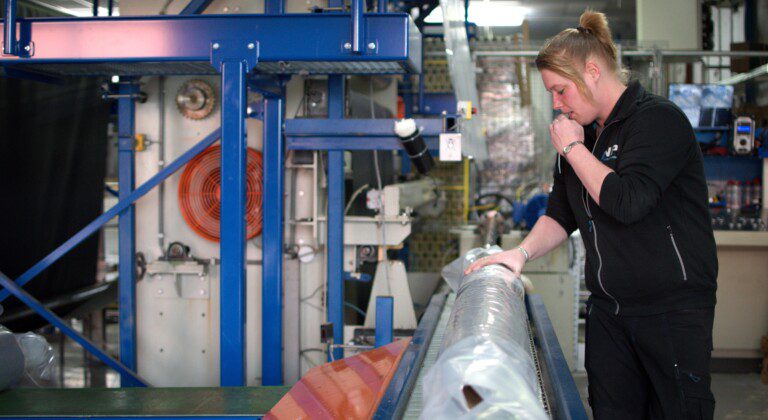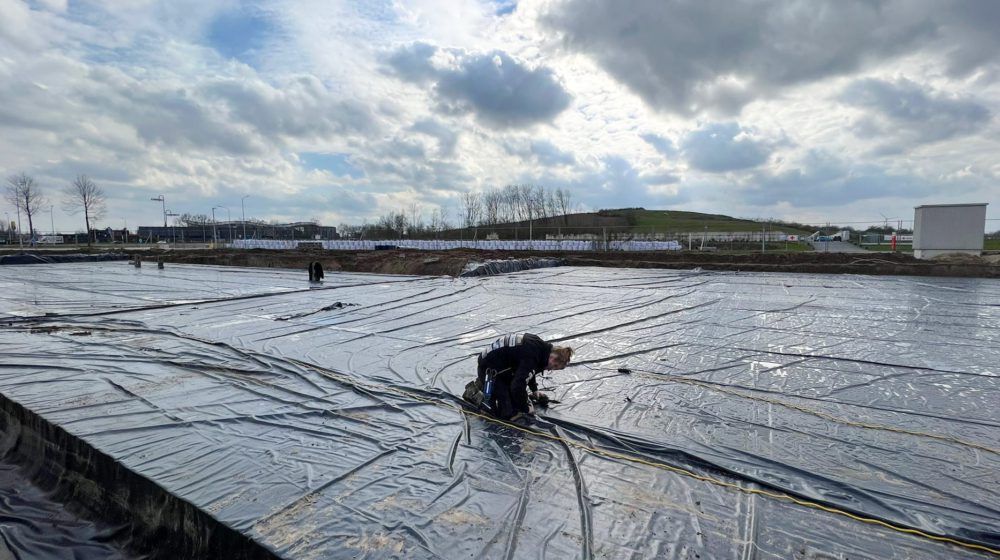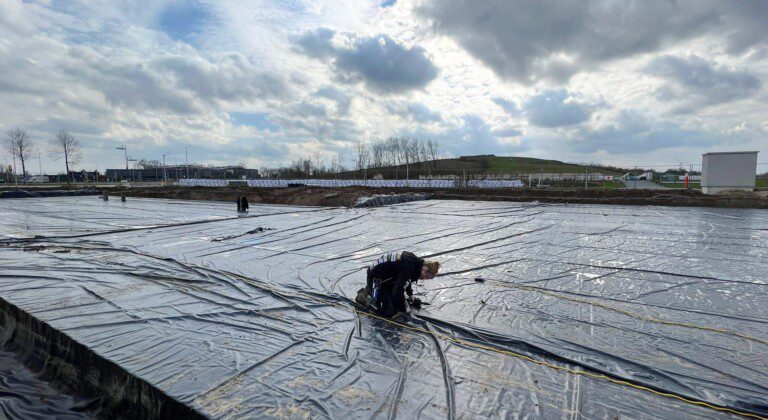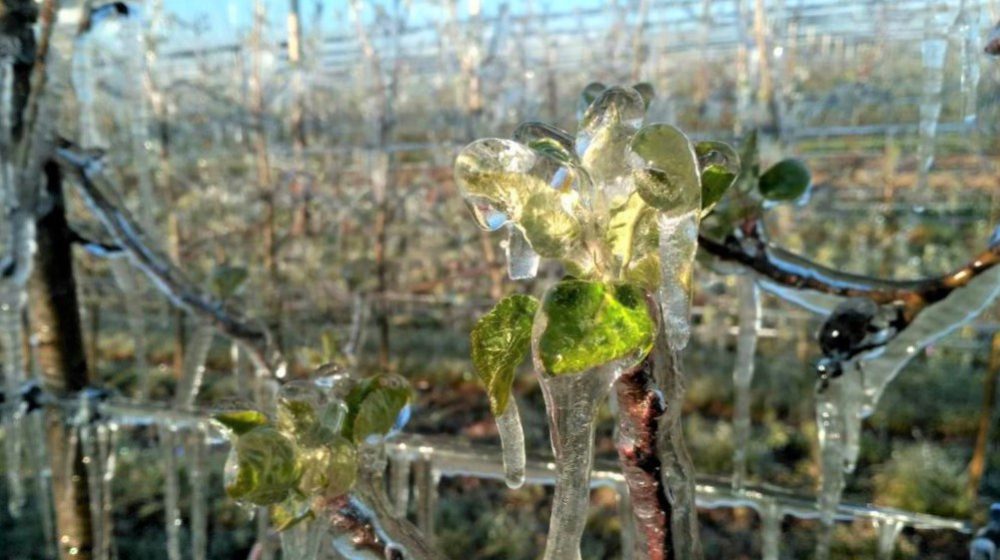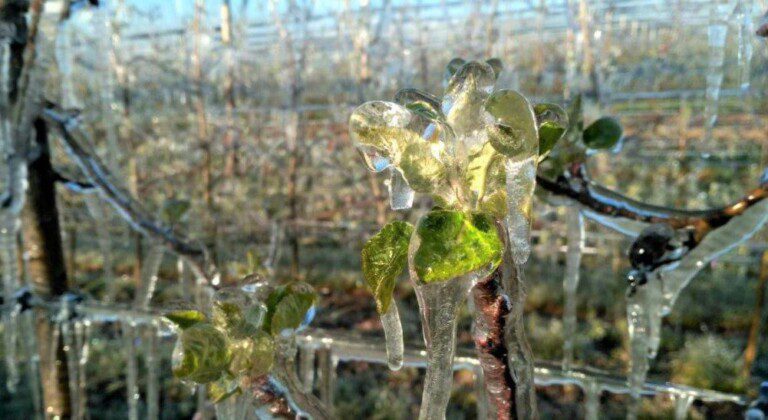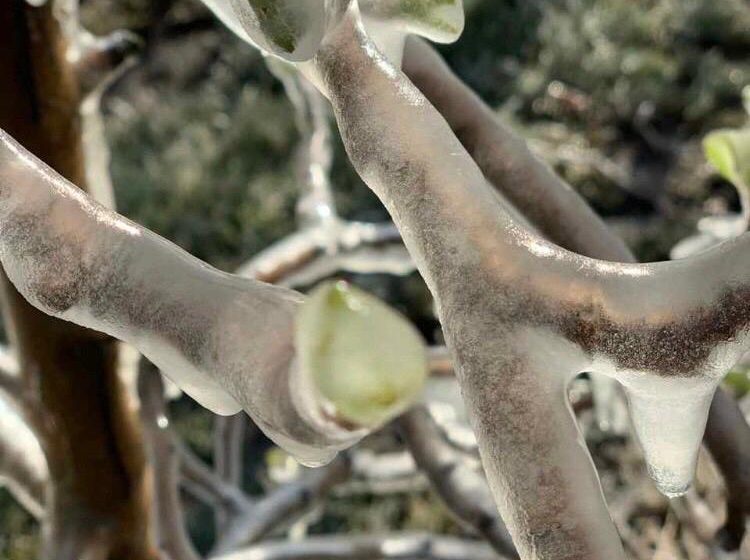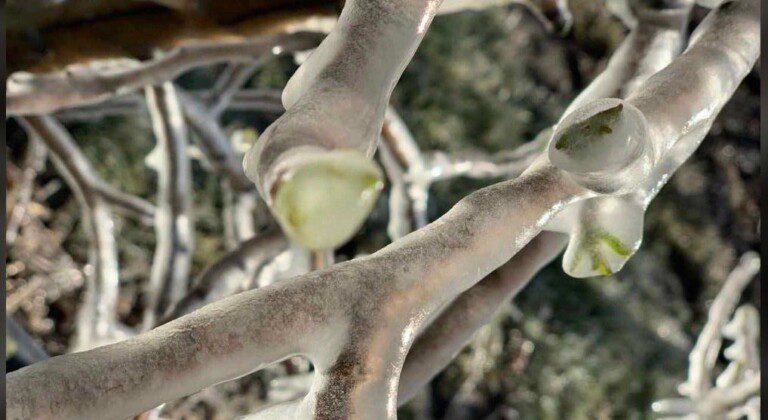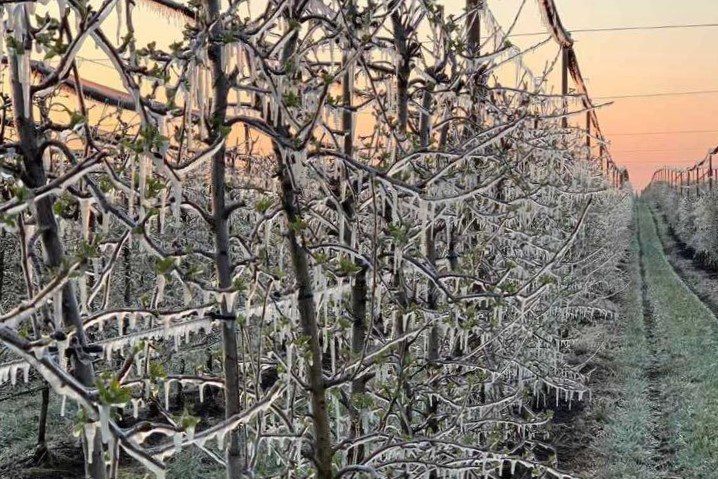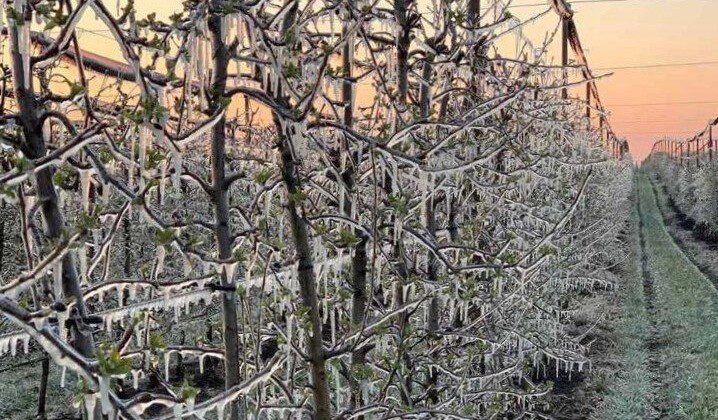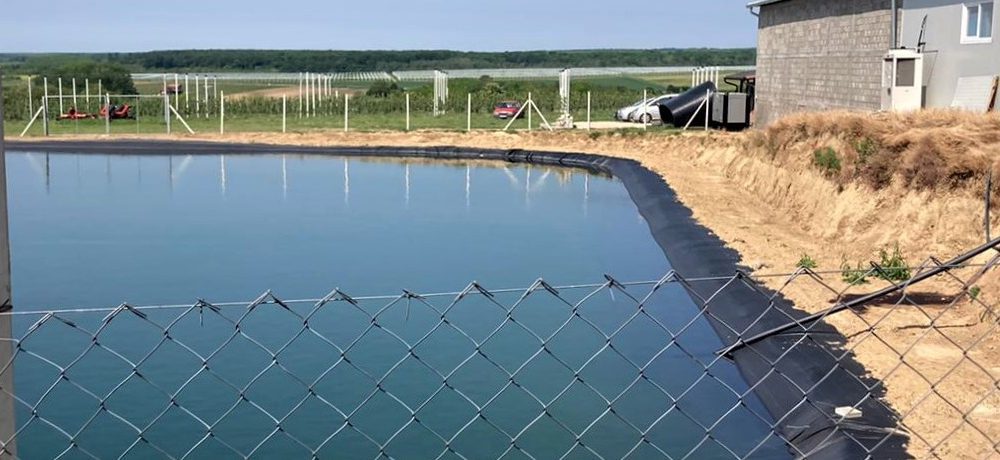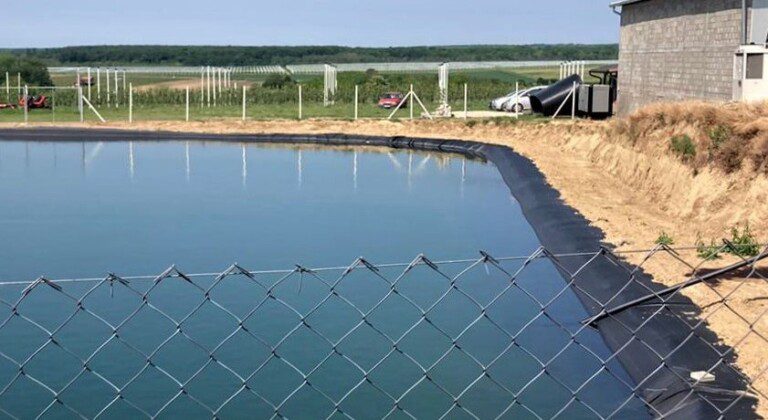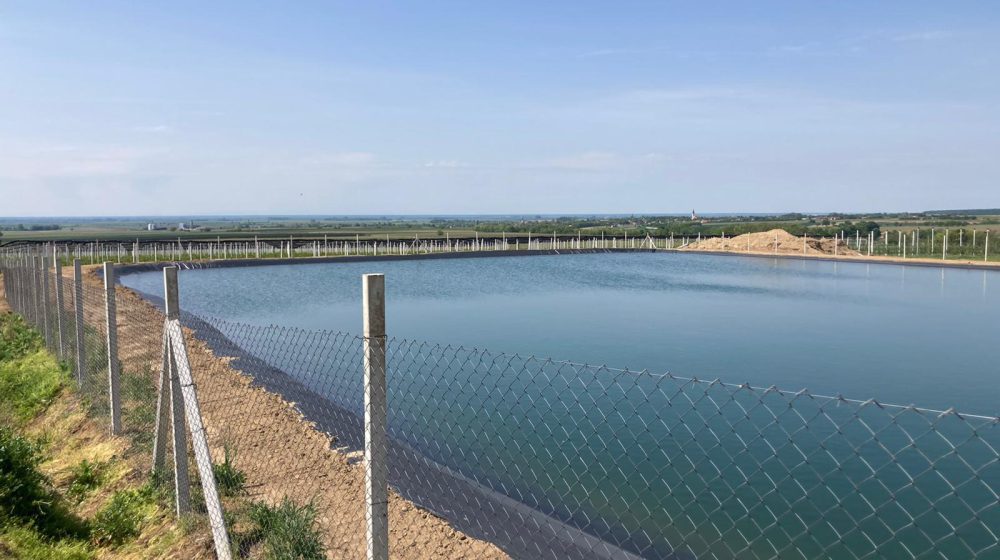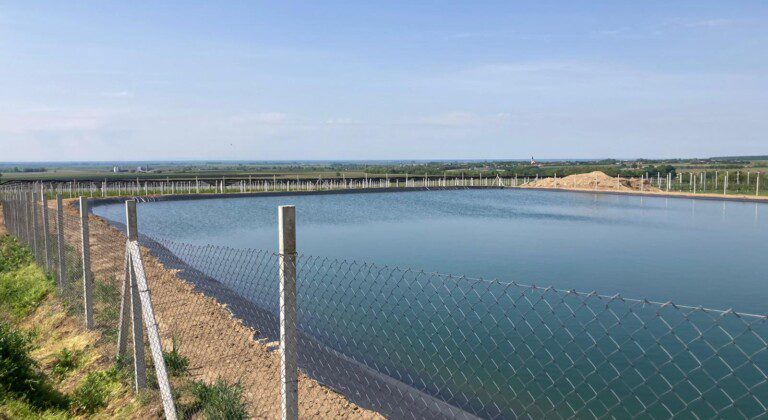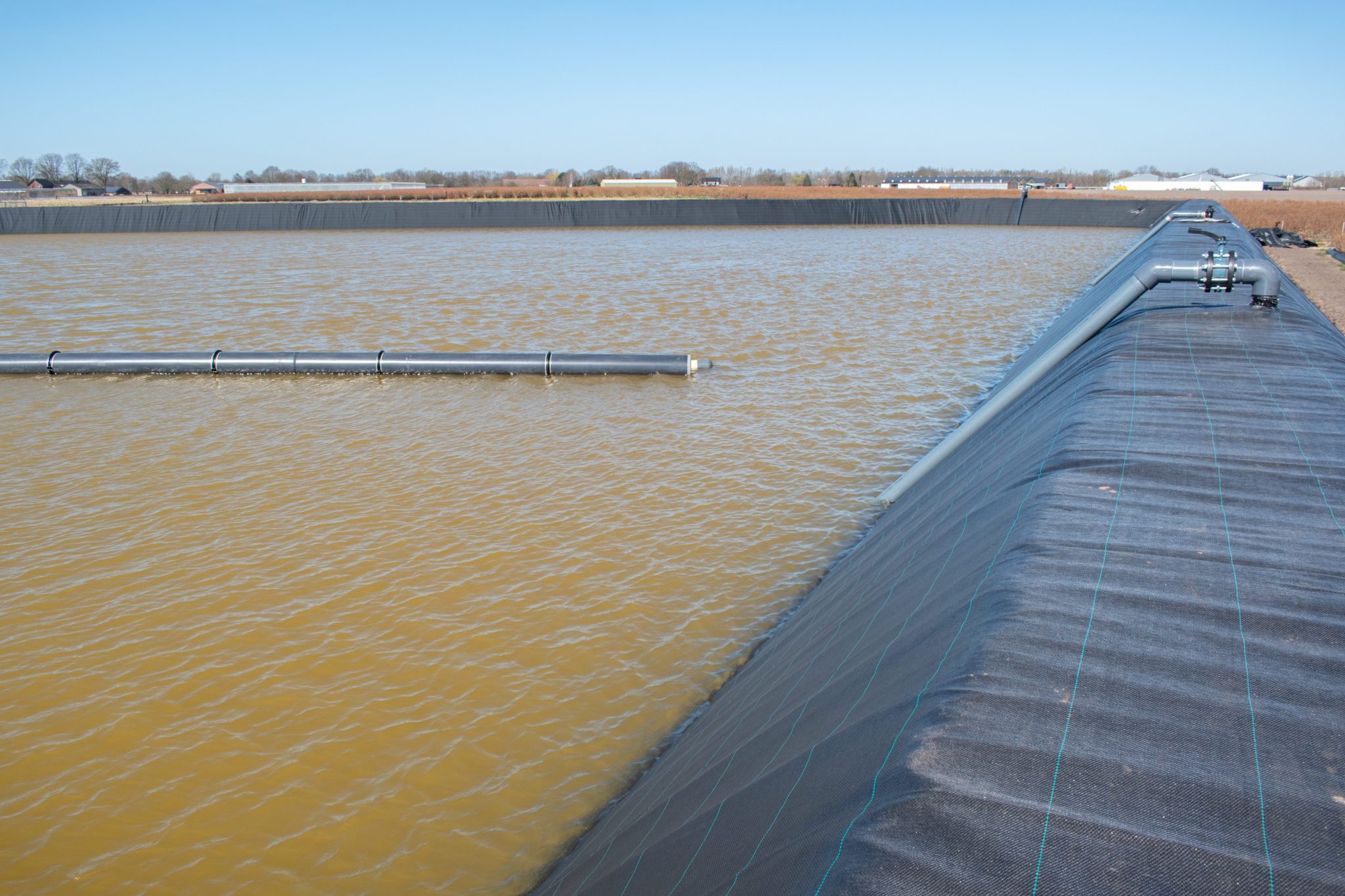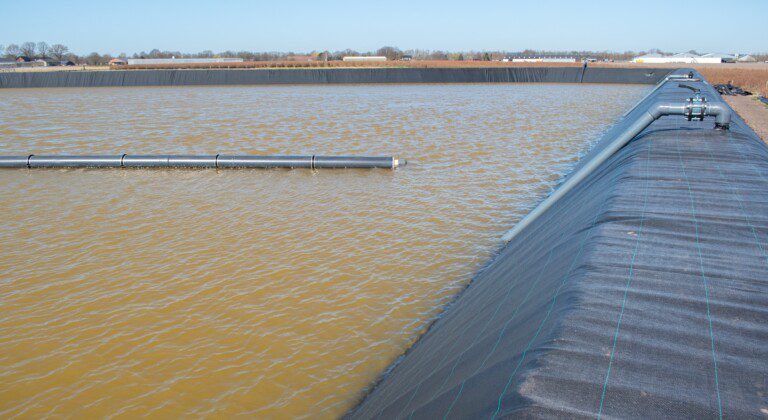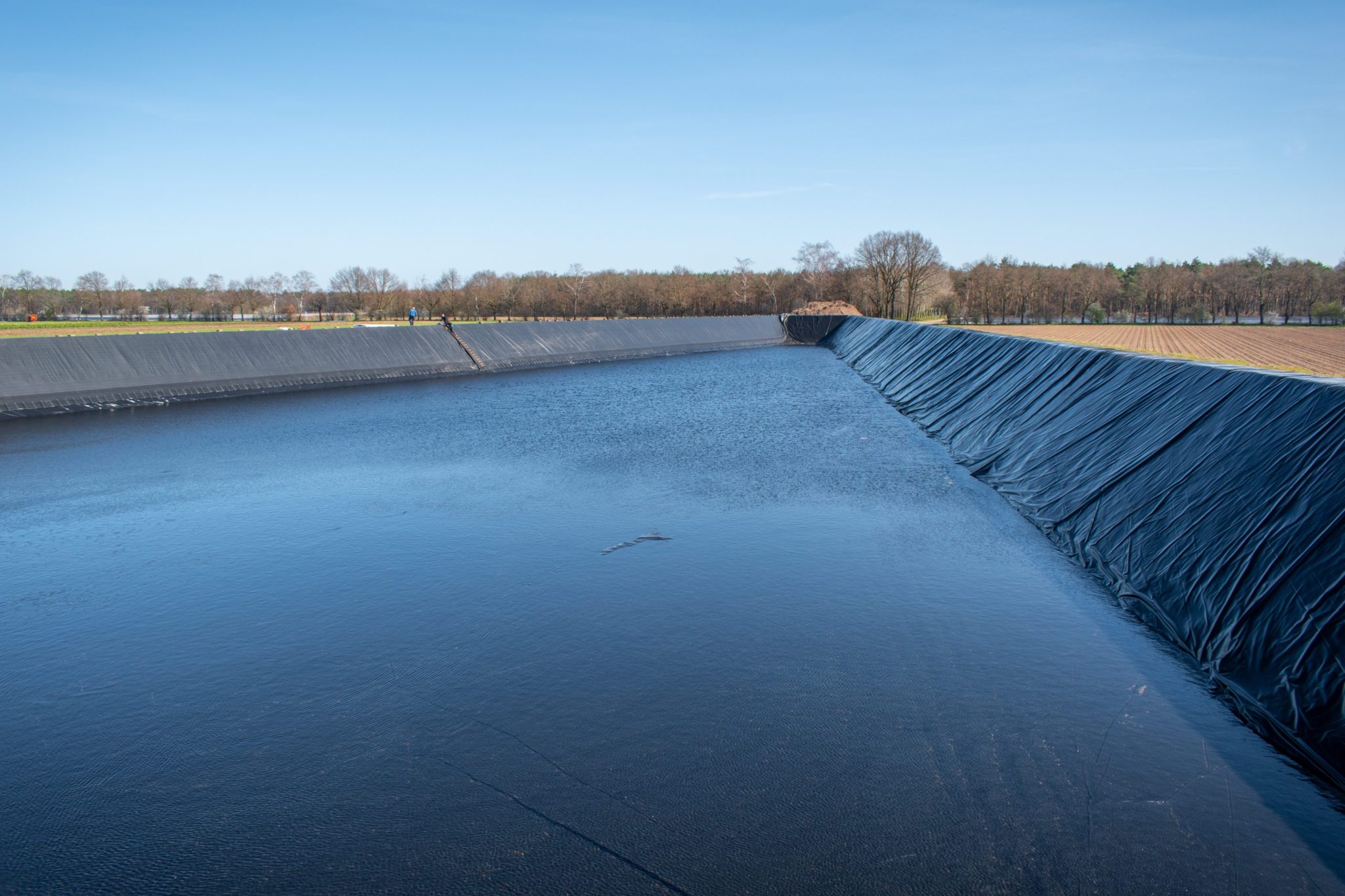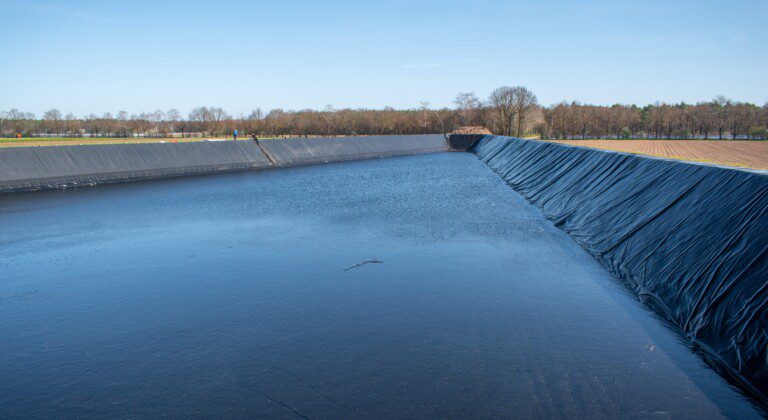Let us introduce you the people behind our film and water storage solutions
Welding expert and frontman at outdoor projects
Jan is perhaps the most talked-about person of NPI ánd the most talking person of NPI. You often hear him long before you see him, and that has been the case for a remarkable 24 years! Jan joined NPI in 1992. With his welding skills, he quickly evolved into a true all-rounder. Over time, however, he developed his own specialisations. Jan excels in the special products department, where he welds customised items such as sleeves, covers and 3D ponds. But even more so, he is the leading man for NPI’s outdoor projects at location. In case his face is familiar to you, we get that. As a our main outdoor welder, he is often the one seen in photos!
Although he took a brief detour to another employer, when NPI asked him to rejoin the outdoor work team in 2008, he was back on a welding project within a week. He says, “It was as if I never took a break; I hadn’t forgotten how to weld! I could dive right back in.” Dive in he did, traveling the country and the world over the following years. He welded hundreds of ponds, basins, cultivation floors, breeding tanks, covers and more. The film projects took him to nearby locations and to very exotic locations: Portugal, England, Germany, Mexico, Canada, Angola and many more. He found the projects in the United States and Sweden the most exciting. In Sweden, they lined construction reservoirs for the new to be built Øresund Bridge between Denmark and Sweden. A unique project!
Today, Jan’s enthusiasm remains unchanged. While ten years ago, he wouldn’t have accepted not going on an outdoor project, he now appreciates the variety in his work and paves the way for new talent. Jan is a wealth of knowledge and experience, now actively passing it on to younger colleagues!
How to install a water tank? The release of our new installation guide!
New texts and design
We are excited to introduce our updated installation guide for our steel water tanks! We took the time to rewrite our manual and the installation steps are now illustrated with graphics.
Easy installation
Installing our water tanks has always been easy; a small team and some basic tools are all you need. However, with this manual we try to make installation even simpler. We designed this manual for our customers so they can optimise the installation of our water tanks and get the most out of them.
What’s in the installation guide?
The guide explains, step by step, how to install our water tanks from A to Z. With the manual it is easy to identify the different components and the required parts. We also pay attention to preparing the groundwork and getting the foundation ready. We explain how the protective fleece and liner should fit into the tank. Later it tells how the tank should be filled with water, how to install in/outlets and how to install an anti-algae cover. We conclude the installation guide with maintenance tips.
Now always included with your order
This manual is from now on included with all our orders as a standard. As we continuously strive for improvement, the development of this manual is an ongoing process to align perfectly with our customers’ needs.
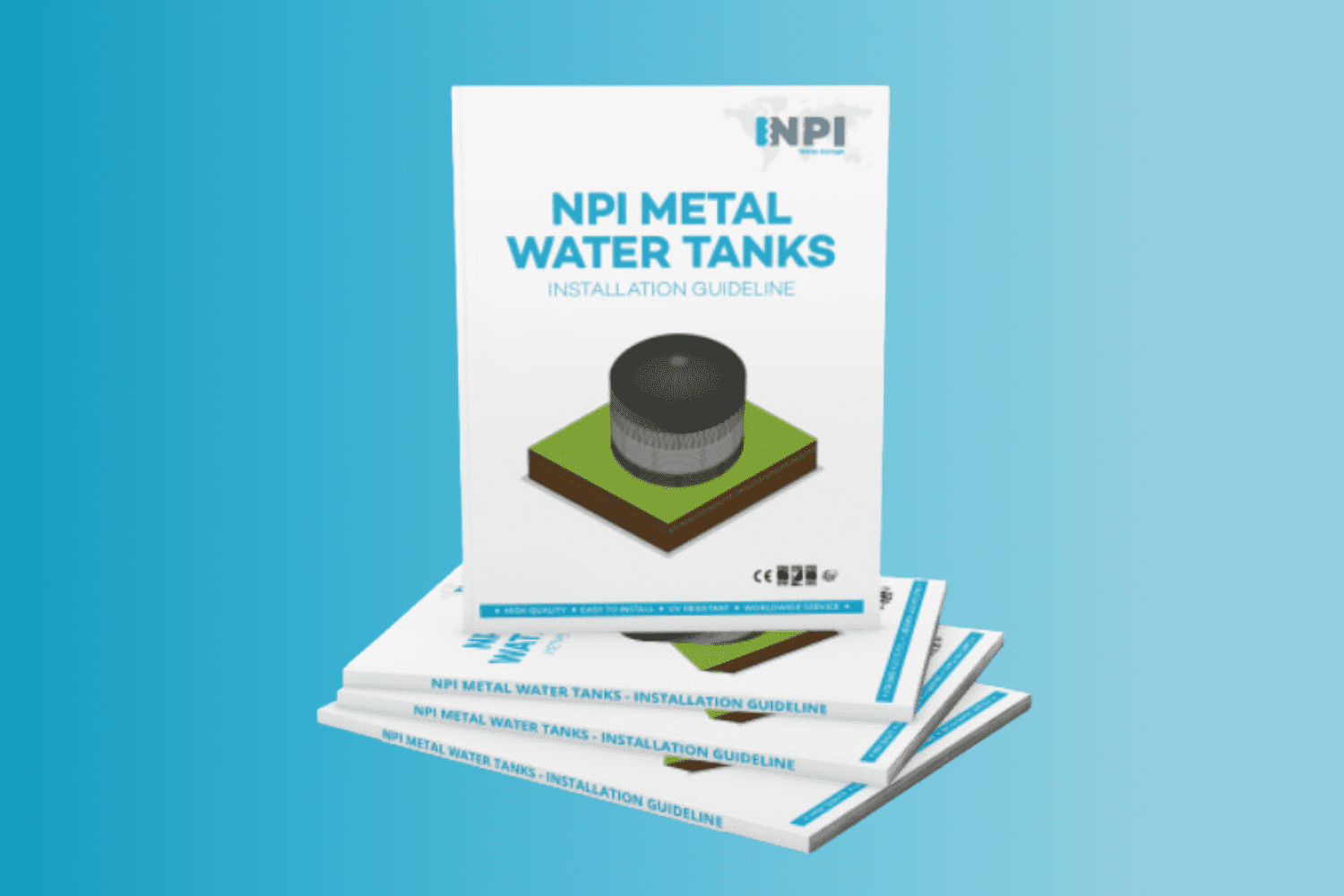
Let’s dive into understanding the importance of the strength of your water tank
The importance of the strength of a water tank
It is widely acknowledged that water is an essential resource that fuels our lives. But have you ever thought about the critical role the strength of your water tank plays in ensuring a reliable water supply? Worldwide, various standards are applied regarding the strength of metal water tanks. We have sorted these various standards out. Which standard do we follow?
Safety factor
At NPI, we take pride in being market leader in producing and exporting modular water tanks. Therefore we perfectly understand that the strength and reliability of water tanks are of utmost importance. Did you know that many companies in our industry use a safety factor of 20% over the required strength for the storage of water? To clarify: this safety factor is a measure of how much a structure can safely hold beyond the anticipated load. At NPI, we design our tanks with a 40% safety factor.
Why does this matter?
1️. Reliability: With a higher safety factor, we produce our tanks to meet even industry standards. In other words, we engineer them to endure pressures well beyond what one would expect in regular use. This elevated safety factor ensures NPI tanks can withstand unexpected stresses, extreme weather conditions, fluctuations in water pressure or other unforeseen challenges. And consequently, it provides peace of mind.
2️. Longevity: We engineer our tanks for long term use. By using a 40% safety factor, we are not just addressing current needs but preparing for the future.
3️. Safety: Safety should always be a top priority, especially when dealing with large volumes of water. The power of water should never be underestimated. Furthermore, the proximity of individuals that work in close proximity to metal water storage tanks heightens the significance of safety. A 40% safety factor helps to mitigate the risk of accidents.
So, concerning water storage needs, it is not only about quantity; it is about quality and reliability. NPI prioritizes our customers’ peace of mind, constructing water tanks that can withstand the test of time and unexpected challenges.
Covers
Around 85% of our water tanks are complemented with a cover. These include our ENPI airfloat covers, tensioned anti-algae covers and galvanized steel roofs. A decent water storage system is the foundation in water management, but the importance of an adequate cover shouldn’t be overlooked! This makes totally sense because without a cover in place, significant water loss occurs due to evaporation and algae growth affects water quality and can lead to problems in the irrigation system.
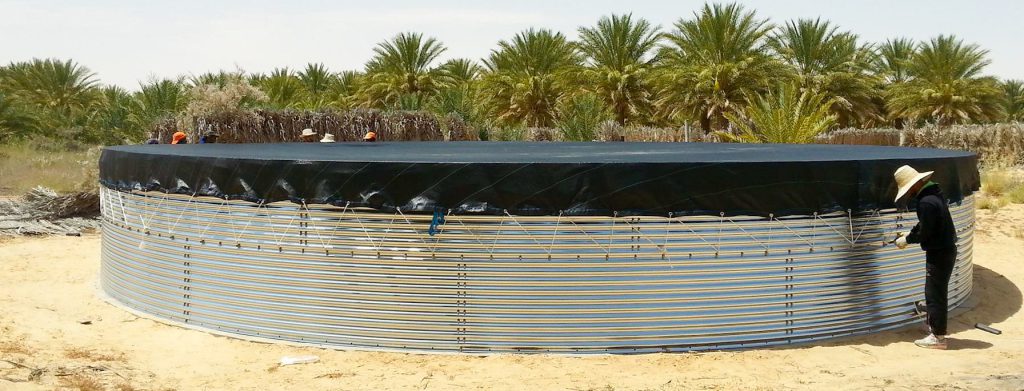
Anti-algae cover
One of the most sold covers is the tensioned anti-algae cover. Our tensioned anti-algae covers are made from 210 gr woven polypropylene with a reinforced edge and stainless steel eyelets. To secure the cover, it is attached to the exterior of the tank or an external supporting system, using special hooks and nylon cord. The primary function of this cover is to inhibit the growth of algae, while additionally serving to shield the water from contamination by small debris and reduce water evaporation. The woven design allows water to permeate through the cover.
The tensioned anti-algae covers are most suitable for tanks with a diameter of up to approximately 9 metres. For larger diameters, we recommend installing a reinforcement ring in the upper ring, combined with a centre pole.
Autumn
Autumn is coming up and it is time to remove and inspect your anti-algae cover. Make sure that the anti-algae cover is still intact: are there no tears in the fabric? Is the cord still in order?
In autumn, the influence of sun gets reduced and temperature drops, resulting in less algae growth. On the other hand, this time of year also sees an increased likelihood of wind. Leaves and debris may cause a reduced permeability of the cover during rain showers, causing higher pression on the cover and the tank walls. So do possible snow loads. The potential for heavy weather conditions brings risks of damage to both the cover and water tank.
Store your anti-algae cover
When autumn starts, it is time to remove your anti-algae cover, give it a thorough cleaning and store it until spring when you can reinstall it.
Weather extremes urge growers to recheck and increase their water buffer.
Weather extremes
These days we see more and more weather extremes: longer periods of droughts and shorter periods of heavy rainfall. The availability of high quality water -wherever and whenever you need it- is crucial for growers’ business. This urges growers to recheck their water management.
Recheck your water buffer
During recent visits in greenhouses abroad, when asked about buffers for unforeseen circumstances, it came to our attention that a lot of growers hardly have any water buffers to survive for more than a day. Depending only on well water is bringing higher risks in the continuity of irrigation plans. And water is essential for the quality and yield of crops, so that makes us ask the question: how big is your water buffer? How many days can you go ahead with your water supply in a dry period or when your well dries out?
And what is enough water? To prevent unpleasant surprises, that question is important to answer. Water supply can be calculated; crop type, greenhouse size, water reuse and climate are often considered. A margin on top of that should not be missing.
Rainwater harvesting
In the Netherlands it is a common practice to harvest every drop of rainwater in order to create an as large as possible buffer to use during longer dry periods. Besides the rainwater coming down for free, also the quality of rainwater is generally higher than well water and it requires less treatment. In short, rainwater harvesting has several advantages ánd is crucial in increasing water buffers.
Water storage
To us, the foundation of building up water buffers is having a system that can harvest rainwater. Installing water tanks or basins can turn free rainwater into a valuable advantage. Both high-tech greenhouses or small scale projects can benefit from rainwater harvesting systems, increasing that valuable water buffer. NPI can help to find the right solution for your water storage needs.
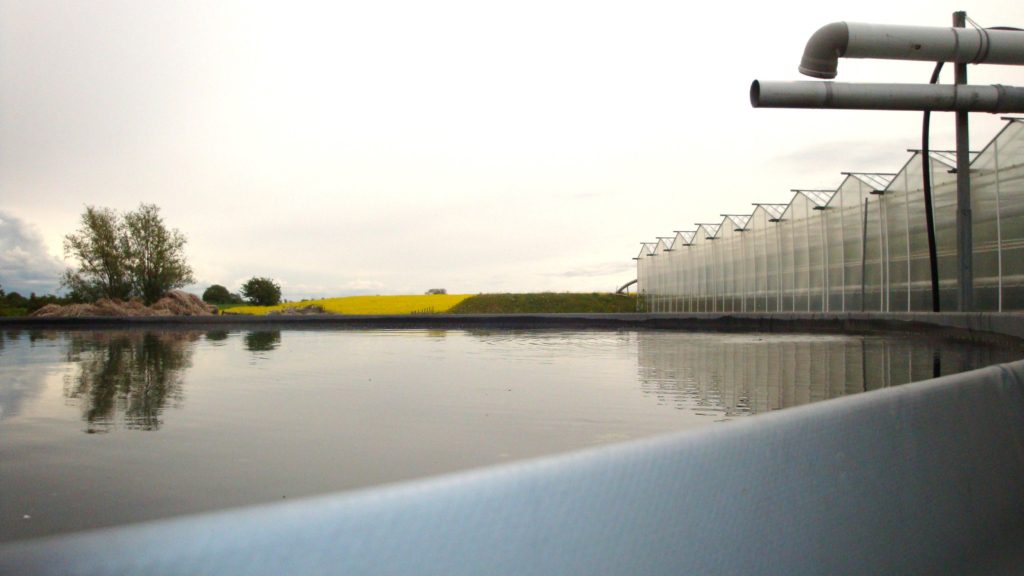
Now more than ever it is important to find solutions to build up a larger water buffer to cope with climate changes. The future of horticulture is all about creating (climate and water) resilience!
Did you know?
- We always advise to get the bottom ring panels of the water tanks coated or painted.
- The application of a powder coating increases protection of the steel against the elements. It helps to protect the metal from rust and thus extends the lifetime of a water tank.
- The panels can be ordered precoated; that is easy! If panels are ordered coated, they apply a layer of powder coating to the precious steel of the bottom rings at the factory.
- As many as panel rings desired can come coated. Customers can even opt for an entirely coated tank.
- Especially in coastal environments or industrial settings where the atmosphere has higher salinity, chemicals or natural pollutants, a coating is highly recommended.
- Powder coating is available in a wide range of colours.
- Also a metal roof can be coated in the desired colour.
- A coating allows tanks to blend into the natural scenery. Some customers opt for this reason for an entirely (pine green) coated tank, benefiting from a high esthetic value.
The future of water conservation
This summer shows it yet again; extreme weather is becoming the new normal. From heat records in southern Europe, to floods and typhoons in Southeast Asia, and from destructive wildfires in America to persistent drought in Africa.
Water plays a central role. Alongside increasingly longer droughts, rainy seasons are becoming shorter and, in most cases, are accompanied by extremely heavy rains. Most of that rainwater is lost through surface runoff as there often is little infrastructure to collect the water for when it is most needed: during dry periods. In this respect, water – and the lack of it – connects us; we have a role to play. Everyone has a role to play.
Groundwater
One of the main sources of water for greenhouse operations is groundwater from wells. Groundwater wells are often overused, with several associated and unsustainable consequences in the long term. Alternative water management approaches are needed.
Rainwater harvesting
Sustainable use of water could maintain a balance between its demand and supply. Rainwater harvesting is the most traditional and sustainable method. It is the practice of collecting and storing rainwater and make it available for later, where and when there is a scarcity of water. Typically for irrigation, but also for agriculture, livestock, and domestic purposes. We have supplied several water tanks to projects where they have been collecting rainwater for flushing water in facilities (project in Thailand, project in India, project in the Netherlands).
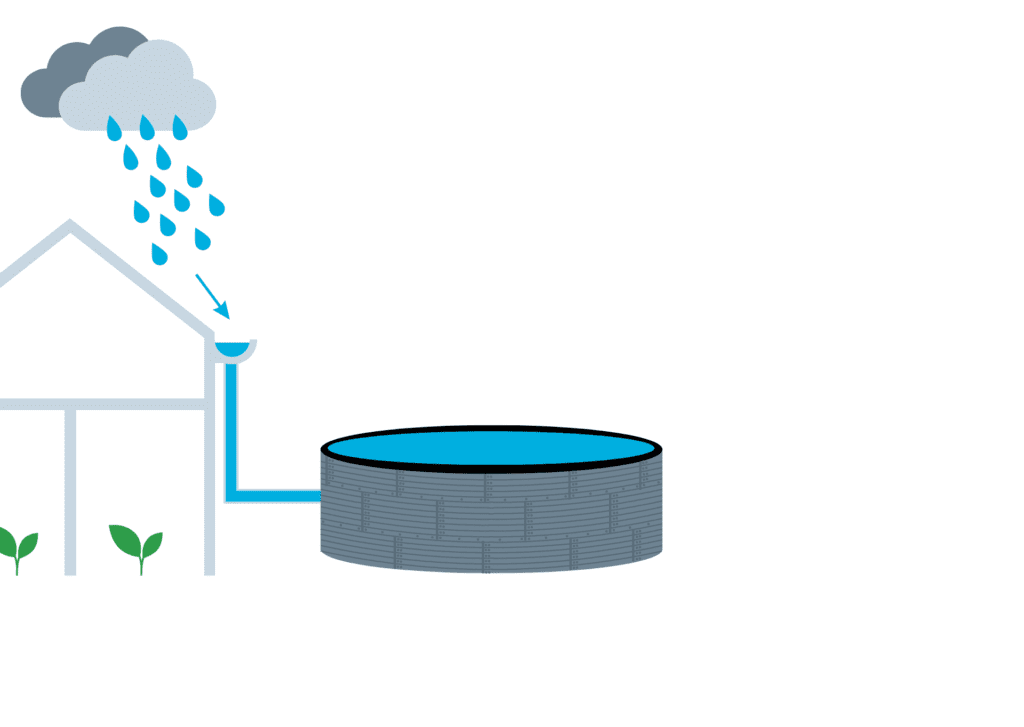
Advantages of rain water harvesting
- Conserves water
- Promotes water self-sufficiency
- Reduces costs. It ensures less reliance on more expensive sources of water. Only a system to harvest rainwater into a water tank has to be installed. However, many facilities already perfectly qualify for rainwater harvesting; with angled roofs, gutter and irrigation systems already in place.
- Reduces drainage problems on a property and runoff. This results in less soil erosion and surface water on site.
- Rainwater is normally of good quality, making it a high-quality water source.
- Relieves underground water wells. Pumping up groundwater is expensive, of lower quality and besides it severely harms the ecosystem.
Greenhouses
The availability of adequate amounts of water is crucial for growing crops. Crops’ necessity of water can easily exceed the supply that is available. With roof drains and gutters, growers have the opportunity to collect large quantities of rainwater that can be used for crop irrigation.
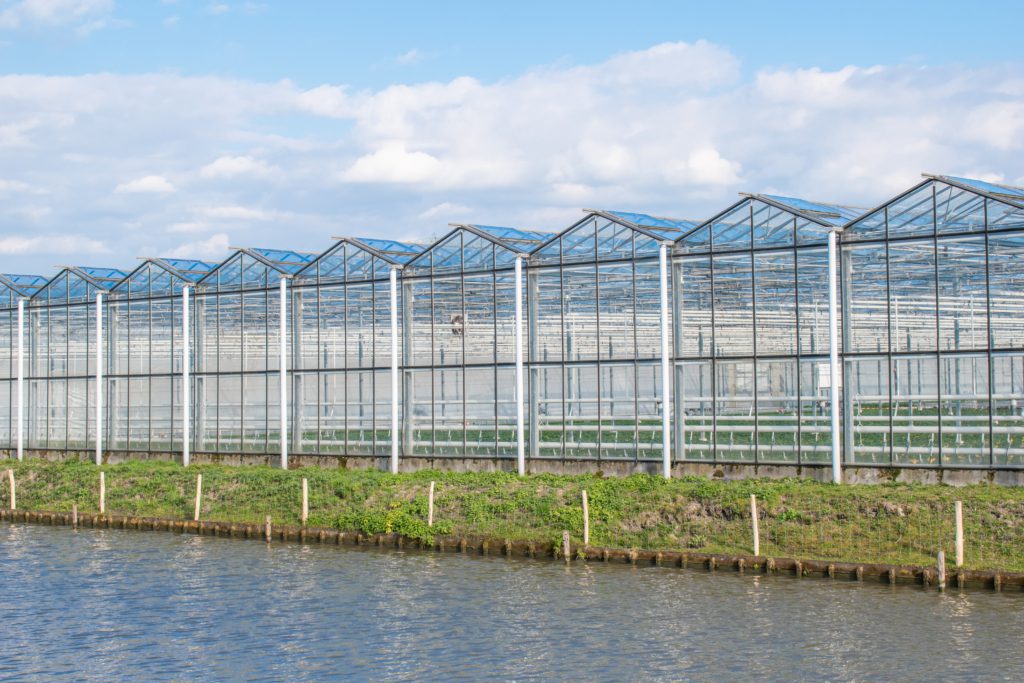
Rainwater storage
There are various types of water harvesting techniques: traditional and modern ones. What they all have in common is that a decent system where the rainwater can be stored is key. That is where NPI plays a role. We make fresh and safe water available. How? By producing and exporting water storage systems, including excavated basins and metal water tanks.
Why water tanks?
- Large capacity on small area
- Made to measure: many capacities and diameters available
- Control over quantity and quality of water
- Modular, so installable in remote areas
- Easy transport
- Easy installation
- High quality: a long lifetime
Overflow
In some cases or seasons, water tanks cannot collect all the rainwater that falls, resulting in nearly always overloaded water tanks. When no overflow is installed, the excess water in the tank seeps down the tank walls. The water will not leave the metal corroded but moisture marks will appear when water frequently overflows. Despite the good quality of galvanisation, we always recommend our customers to install an drain pipe for overflow.
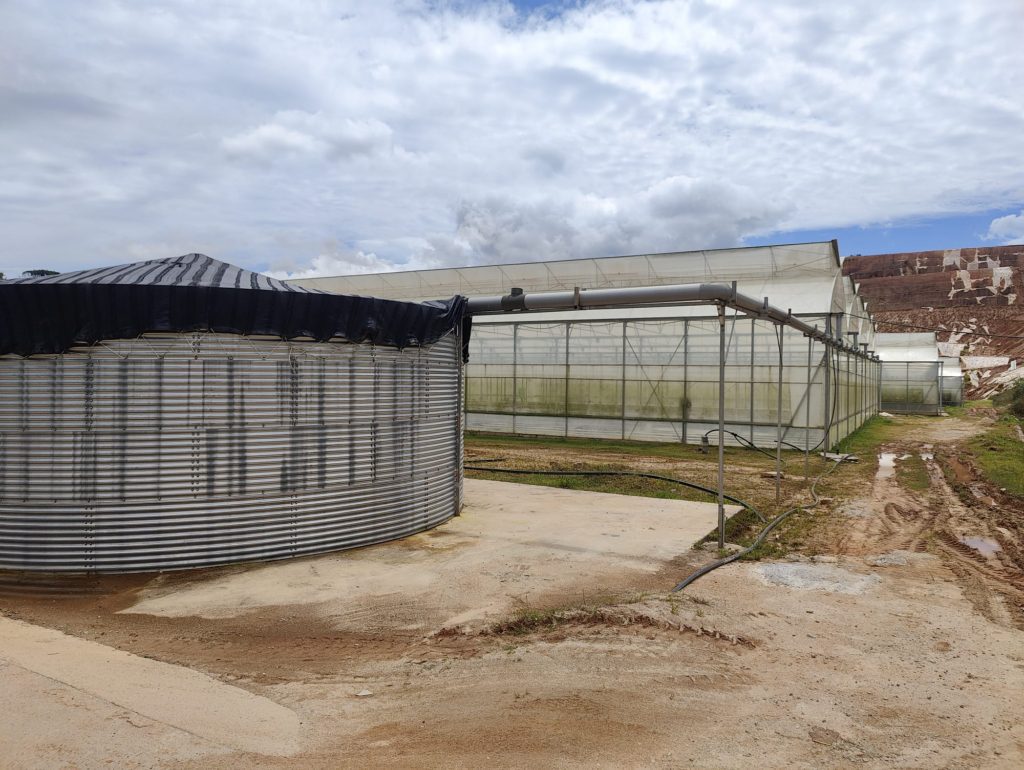
Promoting high-quality and sustainable development of the horticultural industry
Since the beginning of this year, our water storage solutions are exposed in the Horti Innovation Center at Beijing. This demonstration park serves as an exchange platform for the horticulture industry. Internationally renowned companies and horticultural research institutions work together in the center, showcasing the latest innovations, technologies and results of scientific research.
The center includes several functional areas: a flower demonstration area, an agricultural science and technology info exchange area, an AI flower factory laboratory, a horticulture exhibition area and info exchange areas. Demonstrating processes as automation in horticulture, vertical farming and fertilization.
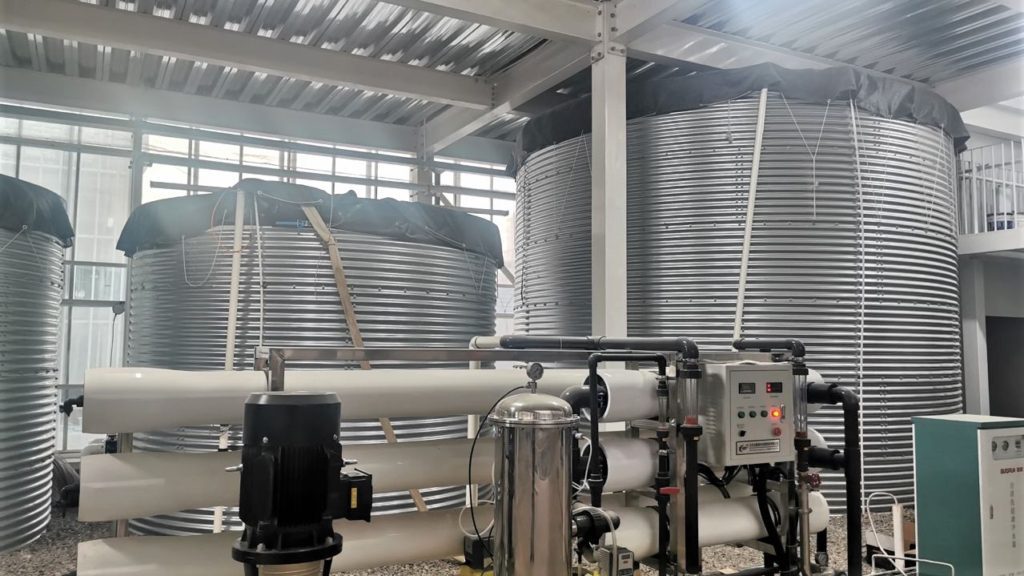
The Horti Innovation Center also aims to provide a communication platform for these companies and help them enter the Chinese market and bring more potential customers. The Chinese horticultural sector shows a huge potential, but foreign companies often face challenges such as the lack of customers and ignorance of local policies. The Innovation Center provides these companies with localized information and help them expand the Chinese market.
Since the establishment of the park, it has already welcomed thousands of visitors. Including horticultural professionals, local investors, influential media in China, international delegations, governments, heads of state and leading politicians.
Obviously, irrigation is unmissable in this concept and our water storage solutions fit perfectly in this high-tech and sustainable demonstration park. Several NPI water tanks were installed in the center and in the exhibition area a booth is installed with more information about our water storage solutions.
If you have been following us for a while, you might have come across him here. Gonçalo; dealer, business partner and friend in Portugal. Let’s introduce him!
Gonçalo
Gonçalo Tavares, 43 years old, currently living in Quarteira (in the Algarve region), but originally from Afife, in the Minho region. The love for the warm and drier weather was enough to make him come from the top north to the top south of Portugal.
Background
Gonçalo always wanted to be a vet but then, with a destiny twist, he ended up studying Forestry. Three years after finishing his forestry degree, he entered the ISCTE Business Management Master. Shortly after finishing his forestry degree, he started working at a Portuguese dealer for agriculture and irrigation and he learned a lot. “In fact, these lessons and the Business Management master were the base for my future entrepreneur life”, Gonçalo adds.
keag
Back in 2013, with a friend business partner, Gonçalo started a company that represented NPI in Portugal and was the base for keag, which was officially born in 2019. Keag’s core business is to represent and distribute the best agricultural irrigation brands in the Portuguese market and abroad. One of these high-quality brands is NPI, with its top of the line water storage solutions.
NPI International
Five years after working with NPI, and with 15 years of experience working with water storage, Gonçalo had the opportunity to assist NPI at an exhibition in Bangkok and that is when NPI International began to take form. Gonçalo explains: “since NPI’s presence in Portuguese and Spanish speaking countries was smaller than it should be, I gladly accepted the challenge of promoting and increasing NPI’s presence in these markets.”
To do that, we have created NPI International: a shared company between keag and NPI in the Netherlands, in 2021. NPI International aims to develop NPI’s solutions and visibility in the Portuguese and Spanish speaking countries, as well as to provide proximity assistance to the Portuguese and Spanish local markets. “NPI International is in its second year of activity and the results achieved so far are promising”, Gonçalo tells.
Quality
“Considering the Portuguese and Spanish markets I would say that the primary challenge lies in countering the perception that cheaper alternatives equate to superior quality. In our water storage solutions we never compromise on quality, and this is what has sustained our presence in the market for over 65 years!”
Header photo: Gonçalo is member of the Quarteira bike team. Whenever our colleague Arjen is in Portugal he joins this group of dedicated bikers. Keag and NPI International are proud sponsors of the Quarteira bike team!
All water tanks that you order now are manufactured from MagiZinc® steel. This offers direct benefits for you. How?
MagiZinc®?
MagiZinc® is an innovative replacement for conventional galvanised steels, providing superior corrosion protection even in harsh environments. This MagiZinc® is a new alloy, equaling 600 gram galvanization. It is a zinc coating that incorporates a small fraction of magnesium and aluminium.
The advantages
- Higher protection against red rust, white rust and edge rust – Magizinc® 310 is the equivalent to Z600
- Greater scratch resistance; less likely to show dents and accidental damage
- Thinner coating so fewer raw materials input make it more sustainable to produce
- Available on water tanks and steel roofs
Application
It is very suitable for indoor and outdoor water tanks. The application of MagiZinc® increases life expectancy of the water tanks, which will reduce maintenance or replacement costs.
Note
Despite its superior protection, steel should be carefully stored in line with earlier guidances.
Let us introduce you the people behind our film and water storage solutions
Our powerhouse Nicole
Nicole started her carrier at NPI in our warehouse, where she easily outworked her male colleagues. She was a brilliant order picker but after a few years she needed a new challenge, which our production management was happy to give her. She joined our production team.
Initially, as first lady at our pond liner department where she processes mother rolls to neatly stacked pallets with sealed pond liner rolls. Now, she is a real allrounder: welding different films and getting to know the intricacies of our special products department. Here we manufacture 3D pond bags and we produce many different film products to measure. And don’t forget her highly valued role in the projects on location these days. Welding and assisting in all weathers!
Nicole is our powerhouse. Always optimistic, always with a can-do-attitude and no challenge is too big for her. Keep up your good work, Nicole!
How water storage can serve anti-frost measurements
Cold spring nights with temperatures subzero lead to exciting days for (fruit) growers. Overnight frost can cause significant damage to fruit blossoms, threathening the harvest of entire fruit orchards with failure. Therefore, in recent years many fruit growers have adopted frost protection measures, including misting of buds.
Frost protection irrigation techniques
NPI assists growers in preparing for these frost protection measures, lining water basins. To explain, growers use excavated basins to store water for misting tree buds, since irrigation techniques prove highly effective in the protection of fruit, trees or crops from frost damage. The water sprayed on buds from water sprinkler systems forms a protective film around the plant. It cools down the plant and it keeps the buds above its critical damage temperature. Moreover, this misting irrigation technique has a few big plusses: it is one of the most economical, least time-consuming and relatively non-polluting frost control options.
Basins
Growers opt for the installation of excavated basins or metal water tanks to store water that can feed the sprinkler systems. In fact, we lined many basins and silo for (fruit) nurseries at home and abroad. Why basins? Basins have several advantages:
Applications and benefits of basins
There are many applications for excavated water basins, from agriculture and horticulture to civil engineering projects, environmental and leisure projects. However, the same benefit applies to all excavated basin applications: the capacity to store large volumes of water. A summary of the benefits:
- We prefabricate the basin liner in our production facility, welded inside under perfect circumstances
- Basins can be installed in any shape or size
- The cost per square meter for basins is relatively low in terms of investment
- Installation on site is quick and easy
Read more about our excavated basins here.
Continuity is key in frost protection
Important in this frost protection method is that permanent sprinkling with water must be maintainted as long as there is a risk of the plant freezing due to frost. If the sprinkling of water would be interrupted, the water film would freeze completely and the plant would freeze to death. However, with a basin installed, growers don’t have to worry about the continuity of their water supply.
Read about a few of our frost protection systems in Serbia, Poland and the Netherlands.

